Brien Foerster is a driving force in the world of ancient mysteries and alternative history. Having appeared on History Channel’s Ancient Aliens on fifteen occasions, and boasting 23 authored books to-date, he ranks amongst the likes of Erich von Däniken, David Hatcher Childress, Robert Bauval and Giorgio A. Tsoukalos. His search for ancient discoveries is never-ending, and his passion equally contagious. In recent years he has brought some particularly astonishing findings to the table, and we’re here to discuss them with Brien.
Communicating With The Dead: An Interview with Author & Researcher, Jeff Belanger
Jeff Belanger always manages to be spectacularly upbeat and positive about something that, for most people, is quite a negative topic: death. Few have been as productive and valuable in the paranormal and spirit-communicating scene as Jeff has. Not only is he the Emmy-nominated host, writer, and producer of the New England Legends on PBS, he is also the writer and researcher for the Travel Channel’s Ghost Adventures, and the host of the widely popular Web and cable talk-show 30 Odd Minutes. He has writtensixteen books to date, all revolving around the mysterious, the paranormal, and the supernatural, ranging from haunted locations and spirit communication, to the Bermuda Triangle, UFO investigating, and even experiences such as climbing Mount Everest.
Our Life Beyond MKULTRA: Lies, Corruption and Love, An Interview with Elisa E.
““You have to understand that the alters…like my front-line system was amazing…all those years I worked and had a so-called normal life parallel to the other life.””
We are extremely grateful to have had Elisa E. back on the show, one of the best sources of information on the world of mind-control that anyone could hope for. A survivor of trauma-based mind-control herself, her ability to reflect on her experiences succinctly and coherently is definitely a gift to anyone researching this subject-matter and hoping to find out more.
Again, we do not claim that what we are talking about is the absolute truth, since that’s something we ourselves do not know. Our primary aim is always to inform – we intend to provide a platform for people to speak from; to listen carefully and analytically; and to intellectually engage with our guests. At times, suspension of doubt is required, but that is indeed the only way that a fully-informed opinion can be reached. Those that are unable to give a theory or a proposed idea the “benefit of the doubt,” even just for a moment, tend to be those that go through life monochromatically and unenlightened.
That said, we broach a number of topics and ideas during this WoTR episode, delving just a little deeper into the world of trauma-based mind-control. We focus more on Book 2 of Our Life Beyond MKULTRA this time round, since our first interview was based on Book 1. Nevertheless, we still recap a little of Book 1, providing both a foundation for the show, as well as a neat introduction for those who have not yet read Elisa’s books.
““If each and every person on earth began to form a conscious relationship with this Unconditional Love that resides within their Benevolent human soul, and obtained or made orgone generators (negative ion generators), malevolent kontrol would be banished as long as we each maintain. No war, no violence, just pure Love and Life.””
What you have to remember is that Elisa does not claim that x, y and z, happened per se. At least not in every instance when she is recounting a bizarre story. For instance, take her various encounters with “aliens” or strange extra-terrestrial beings – she describes her memories as she recalls them, as she thought they happened. However, she fully admits that, when she recalls those various instances, they may not, in fact, have gone down as she believes them to have gone down. She admits that they may be screen memories, at least on some of those many occasions, perhaps implanted by someone else, or at times even self-induced due to the unbearable trauma that they are probably concealing. Alas, this is at the very core of trauma-based mind-control: traumatising and psychologically beating down the victim to the point of being able to fully reshape them mentally. It sounds absolutely horrific, almost unimaginable that one human could do this to another; unfortunately, that also explains why most people probably don’t want to believe in things like this. (As for the human aspect, whether these people are “fully” human or not is a whole topic in itself). Elisa explains how, a lot of the time, she doesn’t know which memories are “real” and which are screen memories – she is completely aware of that, and merely aims to inform us of the memories she does have. How we process that information is up to us.
Perhaps things can indeed get a little confusing when talk of “entities,” “demons,” “aliens, and “beings,” starts becoming heavier. However, bear in mind that this “strange” talk of inter-dimensional beings and seemingly “super-natural” abilities occurs a lot in MKULTRA/mind-control talk. For that reason, it may be useful for some of our listeners to do a bit of their own research, or even read a book or two themselves. We recommend maybe picking up one of Elisa E’s Top 4 Mind-Control Books or Elisa E’s Top 5 Mind-Control Films, which can be found at the bottom of this article here. Otherwise, one of Elisa’s own books, which we can never recommend enough. Be warned though, it does get heavy at times. Fascinating, nevertheless.
She is always “on it,” responding to our questions succinctly and allowing herself time to think where it is necessary – we definitely do not get the vibe that her answers are rehearsed in any way. She makes incredibly astute comments on our shows (often emailing in regarding our other interviews), displaying signs of an intelligent and analytical mind. I think it’s important to have this background knowledge of her when judging her narrative.
““Most people in the conspiracy community generally agree that the world I come from is 50 to 100 years ahead technologically””
And yes, of course she could be duping us, of course there exists the possibility that she may be a psychopath doing this for fun, or even a disinformant – alas, in this line of journalism, those are thoughts that should go without saying, and we are certainly not oblivious to the more nefarious possibilities. But, having researched these themes for the few years that we have, and having come in contact with plenty of people in the MK circles, we are still happy to stand by our opinion that Elisa E is, undoubtedly, one of the most convincing and (more importantly) trustworthy whistleblowers out there. Thus far, she has not given us reason to doubt her, and I believe that’s important to point out. In fact, it’s extremely rare in cases such as this.
One of several intense and disturbing collages featured in Elisa E.'s books, as well as on her website, Our Life Beyond MKULTRA. Used with permission.
We sincerely hope you enjoy listening to this interview as much as it was fascinating for us to conduct. We talk about societal conditioning, and the difference between programming and conditioning; inter-dimensional and non-human entities; esoteric sciences; interconnections with movies, including how the recent film Split may help us understand a fragmented mind; if and how one might spot a mind-controlled person; and what it actually means to be a “high-level bloodline ritually abused trauma-based total mind controlled slave.” We also briefly explore how some of the seemingly superhuman abilities of mind-controlled slaves may be scientifically feasible, such as breathing under water. Yes, it absolutely sounds too weird to be true, but science is slowly revealing things that we had previously thought impossible. In fact, isn’t that what every paradigm-shift does? Shift the very foundations of our beliefs and views of reality? Check out this article on the so-called “Aquaman Crystal”. And if we take into account that real technology (we’re talking underground government research here) is probably decades ahead of what the mainstream is selling us, it becomes a little easier to believe that some of this crazy technology may well be real, and in use right now, albeit unbeknownst to us.
A couple of great links for further education on this topic: Mind Control Simple To Complex & Alters and Triggers.
You can order Elisa E.'s book here: Our Life Beyond MKULTRA Book 1 and Book 2.
And, if you’re brave enough to tackle, "The Illuminati Formula to Create an Undetectable Total Mind Control Slave” (By Fritz Springmeier & Cisco Wheeler), though please bear in mind that it is slightly dated at this point.
We find Elisa E’s story extremely compelling, and we continue to support her. Whatever it is that is happening to all these people, we hope that you will at least acknowledge that it is something. When so many people are coming out with the same stories over and over again (a quick google search will tell you that much), it becomes increasingly difficult to ignore this phenomenon.
Now for the interview, enjoy!
Another Mind Control Victim To The Slaughter? The Mysterious Murder of Tiffany Jenks
This past Sunday, we had John Captain III on the show – for over three years now, he has been campaigning for justice and exposure of the murder of his girlfriend, Tiffany Jenks. Three years on, however, the media is still brushing the facts under the carpet, and justice remains to be served.
We want to make it clear in advance: this story will come across as crazy and absurd to many readers; but we urge you to suspend your disbelief and cast aside your doubt, just for a moment, while you read this article and listen to the interview. Then go ahead and form your own conclusion. As always, we aim to remain as unbiased as possible, and give everyone a chance to speak. As J.S. Mill once said, “We can never be sure that the opinion we are endeavoring to stifle is a false opinion; and if we were sure, stifling it would be an evil still. [John Stuart Mill, On Liberty, 1859]
Tiffany Jenks was murdered on October 8th 2013, at the age of 35 – she was shot in the forehead, by someone she did not know and had apparently only met that night, shortly prior to her death. Or so the police say.
For a general overview of the “official” story, check out some of these links:
www.kptv.com/story/23731932/court-documents-describe-night-of-tiffany-jenks-death-at-blue-lake-park
www.cbs46.com/story/23809980/man-charged-with-murder-for-death-of-portland-woman-tiffany-jenks
koin.com/2014/08/22/vivacious-tiffany-jenks-remembered-at-sentencing
However, the story that we present here on the show deviates a little from the publically released story, and we hope that it exposes as much of the truth as possible. John is here to speak about his lost partner and to tell us his side of the story, and we're here to question, listen, and give him a platform to talk on – something the police has not done.
What you need to know is that Tiffany Jenks’ case does indeed display all the stereotypical tell-tale signs of a mind control victim (or a victim of TMK, Total Mind Kontrol, as it is known in some circles): the evidence all points in that direction. She was a physically fit and beautiful woman; intelligent, a high-achiever and a college athlete; she had a top job; yet, she had drinking problems and, more significantly, mental problems. She also appears to have been quite a socially isolated person, despite her approachable personality. She would often hint at there being more to her than meets the eye…but it always remained ambiguous as to what exactly that was.
For anyone reading about this subject-matter for the first time, it may be beneficial to hark back to some of our previous interviews (e.g. “From Victim To Survivor - The Real “Jason Bourne” And The Dark World Of Mkultra), or do some quick Google research yourself. It may well be necessary, at least to get a light grasp on what we’re talking about. This link may also be useful to many of you, especially for those that may want to delve a little deeper and learn more about the various stages of Mind Control (be sure to follow monarchprogramming.wordpress.com, I find a lot of the information on there very useful).
Anyway, enjoy this interview, and we hope that it will enlighten you a little more as to what is going on in our world… We urge you to take action where you can.
Spread The Word and Spread The Love.
A Tour Through Esoteric Hollywood: Sex, Cults and Symbols with Author and Researcher Jay Dyer
Jay’s back at it again, this time joining us on West of The Rockies to talk about his new book, Esoteric Hollywood. With so much information packed into the book, we set out to focus on a select few movies, namely, The Shining, Rosemary’s Baby, and Close Encounters of The Third Kind. Of course, this also meant delving into the minds of Stanley Kubrick, Roman Polanski, and Steven Spielberg, the directors of those movies respectively. We also analyse the wider impact and scope of movies, as pertains to the actors involved; possible government or power connections; and, of course, the effects on the public viewers. As usual, there was a lot to be said, and too little time.
The masked ball scene from Eyes Wide Shut (1999) Related: Examining The Esoteric Themes Of Kubrick's "Eyes Wide Shut" with Jay Dyer.
We interviewed Jay back in June of last year, focusing mainly on Kubrick’s Eyes Wide Shut. For those of you that haven’t listened to that show yet, or perhaps would like more of an introduction into Jay’s work, head over to our article, Examining The Esoteric Themes Of Kubrick's "Eyes Wide Shut" With Jay Dyer.
Is Hollywood really as glitzy and glamorous as it advertises to be? Is it just a façade for something much darker, hiding something far more nefarious and wide-reaching than we realise? It has long been known that the lure of Hollywood stardom can turn a good person bad, and poison even the purest of souls. What is the real motive behind the many evils we hear of, the doped-up stars gone crazy, the apparent secret and/or subliminal messages in movies?
Scene from Rosemary's Baby (1968) written and directed by Roman Polanski.
Of course, the Illuminati, government and CIA, as well as religious/cult involvement are always terms that pop up in discussions such as these. To what extent are these various entities or enterprises really involved in the film industry? Are movie directors puppets just as much as actors and pop-stars have often been thought to be?
The recurrent surrealistic themes of the aforementioned movies are certainly not to be dismissed, especially the common motif of a storyline that blends reality with fiction, waking states with dream sequences. In essence, they’re all pretty “trippy” movies, and that should not go unnoticed. Are they trying to inform us of something going on behind the scenes? Perhaps in Gorvernment? Preparing us for some sort of revelation or disclosure? Mass mind-controlling us, perhaps via various frequencies, subliminal messages, and even obvious messages? Alas, is that not what powerful propaganda and stringent censorship is doing in many nations right now even, and certainly in the past, e.g. Hitler’s Germany? Or….right here?
Scene from Close Encounters of the Third Kind (1977) written and directed by Steven Spielberg.
Of course, we can’t omit the topics of MK Ultra and aliens in a discussion such as this. How might film play a role in the creation of mind-controlled (or “kontrolled”) victims? And how does this tie in to alleged alien encounters/UFO abductions? Do the ideas overlap? Are they both forms of mind-control, using trauma and screen memories to make the victim believe certain things, or cause them to have certain characteristics or abilities? It’s certainly no new theory that those experiencing bizarre or paranormal events may be the subject of false screen memories. Once again though, if this is indeed the case, we need to ask ourselves: to what ends?
We also briefly touch on something a little closer to current times, namely Stranger Things (the recently released science fiction-horror web series starring Winona Ryder) and the advent of a new age of entertainment where a “perfect” TV show or movie can be generated via an algorithm. Indeed, the writers working for Netflix are said to have used the huge amounts of viewer data and various algorithms in creating the storyline for last year’s paranormal TV hit (I say TV, though most people are probably watching these types of shows on their computer). The same goes for other Netflix originals. With that in mind, what does that mean for us, as viewers? Sure, on one hand, it’s great to watch something that is essentially guaranteed to be good, if not amazing. On the other hand…what other doors does this open? If the television and film industry is already digging this deep into our preferences, our lives, our minds, what else could they achieve? Or what are they already doing? The possibilities are vast, and often scary.
Needless to say, we also throw in some Scientology references (L. Ron Hubbard’s influence in Hollywood, even to this day, cannot go without mention), and briefly look at how Aleister Crowley and Jack Parsons may have played a role in this scene (no pun intended…or maybe it was).
We hope you enjoy the interview – allow yourself to be taken on a little tour through Esoteric Hollywood:
Paranormal Lockdown, UFO Over Chile, Wikileaks & UFO Disclosure with Paranormal Investigator, Ben Hansen
Ben Hansen, inside Waver Hills Sanatorium for an episode of Paranormal Lockdown with Nick Groff and Katrina Weidman. (Source)
UFO over Chile - November 11, 2014. Photo: CEFAA
Regular guest Ben Hansen is back on WoTR Radio tonight, with another healthy dose of updates on all things UFOs and the supernatural. During this episode of West of The Rockies we discuss the TV show, Paranormal Lockdown on Destination America/TLC; paranormal investigations and the use of new technology; the debunking of the Mexican Air Force UFO sighting; the analysis of the new Chilean thermal UFO video; and a little discussion on Wikileaks and the Podesta/UFO emails thrown in.
Ben also talks about the upcoming paranormal event that he’s involved in, namely, “Night At The Surfing Museum,” presented by Haunted Orange County which will be taking place on February 22nd. You can also catch Ben at The 26th Annual International UFO Congress taking place February 15th through 19th in Scottsdale, Arizona. Ben will be giving a presentation on his analysis of recent presidential UFO comments as well as leading and hosting a night-time skywatch during the conference.
For more information on Ben and his upcoming appearances, check out his website: BenHansen.com
Enjoy the interview!
The Mystery of The Toynbee Tiles: An Interview with Steve Weinik of the Documentary "Resurrect Dead"
Justin Duerr next to a Toynbee Tile -- from the 2011 documentary, Resurrect Dead: The Mystery of the Toynbee Tiles.
Photo: ©Steve Weinik Photography
Warning: SPOILER ALERT
(for those that have not yet seen, Resurrect Dead: The Mystery of The Toynbee Tiles)
For a good fifteen years now, Steve Weinik has been studying a mystery – a modern-day riddle that, as of yet, remains largely unsolved. A perfect topic for West of The Rockies to delve into and explore further…
The Toynbee Tiles first started appearing on the streets back in the early 80’s, initially just in Philadelphia, and then spreading up to New York as well as further out East, even making appearances in South America, specifically in Brazil, Chile, and Argentina. Of course, the questions started building. What were these strange tiles? A student art project gone pandemic? An arcane prophecy? NWO/Illuminati secret messages? What they are, or rather why, remains to be fully explained.
Tile located at 15th & Chestnut St. Philadelphia, PA
Photo: ©Steve Weinik Photography
The message, in its simplest form:
TOYNBEE IDEA
IN MOViE `2001
RESURRECT DEAD
ON PLANET JUPiTER
(Common variations include changing ‘MOVIE’ to ‘Kubrick’s’, ‘RESURRECT’ to ‘RAiSE’, and/or omitting ‘ON’.)
For a long period of time, it remained uncertain as to exactly what the tiles were made of, and how they came to be so solidly embedded in the streets of Philadelphia and other cities. More importantly, how they appeared so discreetly, without anyone ever publically witnessing the tiler himself (we can safely assume, at this point, that it was a he). However, by now we can at least be certain of this much: they are held together by Elmer’s glue and asphalt crack-filling compound, while the cut-out shapes are made of flexible linoleum.
Colin Smith uncovering a tile at 12th & Market Streets, Philadelphia, PA. Photo: ©Steve Weinik Photography
The tiles are finally sandwiched between two layers of tar paper, the bottom sheet acting as a gluing agent to the road, whilst the top layer fills the open cracks and gaps of the tile over time (through the pressure of vehicles rolling over it), with the top tar sheet eventually peeling off, leaving the perfectly embedded tile on display.
The lettering and framing (as well as the occasional figures, some of which include robot/android-like creatures; naked, provocatively-posed females silhouettes; and, on some occasions, even extraordinarily crafted grim-reaper-like characters) are roughly cut, with an almost child-like quality, the colourful appearance often adding to their playfulness, making them absolutely captivating pieces of art.
Edison New Jersey tile in 2007. This tile has since been paved over. Photo: ©Steve Weinik Photography
In fact, as of October 2015, the Streets Department of Philadelphia officially decided to recognise the Toynbee Tiles as street art, agreeing to, “save one or two of the Toynbee Tiles only if there is a fast and affordable method for removing them.” Admittedly, where possible, they could just work around the tiles or simply leave them put where they need not be removed, as they have already done in some places.
Steve grew up in Philadelphia, first noticing the tiles back in 1993, though only actively starting to investigate them around 2001 – already being a hobby photographer at that time, he naturally started taking photos of them and began documenting their whereabouts.
Tile at 30th St. & 6th Ave. New York, NY.
Photo: ©Steve Weinik Photography
Alongside a group of three other Toynbee Tile enthusiasts, a documentary came under way in 2005, initially commenced by Jon Foy, with Steve and the others (namely Justin Duerr and Colin Smith) joining the project a little while later.
So, what was The Toynbee Tiler (TTT) trying to achieve? What message was he trying to get out there? Was he part of a cult? Was he crazy? Did he know something important that needed to be told to the public? All of these are questions are addressed during our interview, and certainly in the documentary.
Iconic image of the Molly Pitcher rest area tile near Cranbury, NJ. Photo: ©Steve Weinik Photography
We are all fairly certain at this point as to who the TTT is, though the details remain to be explored. Personally, I still feel that the occurrence of Julius “Railroad Joe” in this story remains somewhat of a mystery – might he still have been involved or related in some way? Perhaps simultaneously working alongside Sevy, or perhaps at a different time (either prior or after Sevy’s involvement) - whether they were working in conjunction or not would also remain to be solved, as it’s perfectly possible that one was a copycat of the other, or one was somehow continuing the “legacy” of the other. Simply put, his story seems to fit just too well to merely be a coincidence. What do you think?
The development of the tiles, that is, the aesthetic and geographical changes over time, lead us down a path of understanding as well as further confusion, the increasingly crazy ramblings of later days indicative of a breakdown in the tiler’s mental state and growing paranoia. Join us in this interview, and see what you make of it….
For further details regarding the movie, the film crew, and their intentions, head over to the FAQ section of the movie website and be sure to visit Steve Weinik's photography page to check out his amazing work as well as Steve's page dedicated to the Toynbee Tile mystery.
Want to find out more about this mystery? Tune in to our show!
Over and Out. Peace
Heaven and Earth Oasis 4th Annual Fundraiser - Holistic Therapy for War Veterans
Valerie Heath, Founder of Heaven and Hearth Oasis speaking at their 4th Annual Fundraiser in Hollywood, California.
Attendees were greeted with a number of booths offering a variety of methods to help treat symptoms of PTSD.
This last Saturday saw the Loews Hotel (Hollywood) host the annual Heaven and Earth Oasis fundraiser. Having just interviewed Valerie Heath, founder and President of Heaven and Earth Oasis, this was our first opportunity at seeing the organisation in full action. Dedicated to helping war veterans, not just on a physical but also a mental and emotional level, this organisation aims to do all this at zero cost to the veterans themselves.
Veterans were able to experience some of the holistic treatments offered by the practitioners of Heaven and Earth Oasis.
Now in its fourth year running, the non-profit was originally established by Valerie, after having come to the realisation that war veterans sadly do not receive the full amount of care that they need and deserve. Those returning from war are damaged on far more than a mere physical level, and thus, Valerie, alongside co-founder Chantal Benedict, made it their task to provide holistic treatments for veterans. This includes the more popular complementary treatments, such as massage and acupuncture, but also lesser-known methods, such as DNA Theta Healing and Reiki (both forms of energy healing, becoming increasingly more popular in the US).
Kurtis Lee Thomas' booth at the 4th Annual Heaven and Earth Oasis Fundraiser.
At the fundraiser, we were lucky to meet some of the amazing people working in this field. Kurtis Lee Thomas had a booth set up in the vendors’ hall, and also delivered an incredibly uplifting speech before the luncheon. We even grabbed a couple of his orgone pendants, which, in all honesty, seem to be doing their thing so far.
We also bumped into world-renowned psychic, Patti Negri. So, how is a psychic related to this? Admittedly, the idea of a psychic healer helping out with emotional problems is unwelcomed by a lot of people. But this is holistic healing, an approach that tries to address all aspects of someone’s life, which may often involve the spiritual realm or perhaps even the afterworld. This means having to keep one’s barriers down a little, and allowing new ideas to take form -- a lot of the techniques used in alternative healing may appear kooky at first, but they all aim to benefit the overall wellbeing of the individual. And Patti has been known to do just that.
World-renowned psychic, Patti Negri, about to begin a psychic healing session at her booth during the 4th Annual Heaven and Earth Oasis Fundraiser.
Leon Cooper, WWII Vet & American Hero, featured in the documentary Return to the Phillipines, the Leon Cooper Story.
WoTR also had the incredible opportunity to meet Leon Cooper, WWII Veteran and Navy landing craft officer, from the recent documentary, Return to the Phillipines, the Leon Cooper Story (Watch Trailer).
To find out more about Heaven and Earth Oasis and their treatment for war veterans, you can listen to our recent interview with founder, Valerie Heath.
Heaven and Earth Oasis 4th Annual Fundraiser Gallery
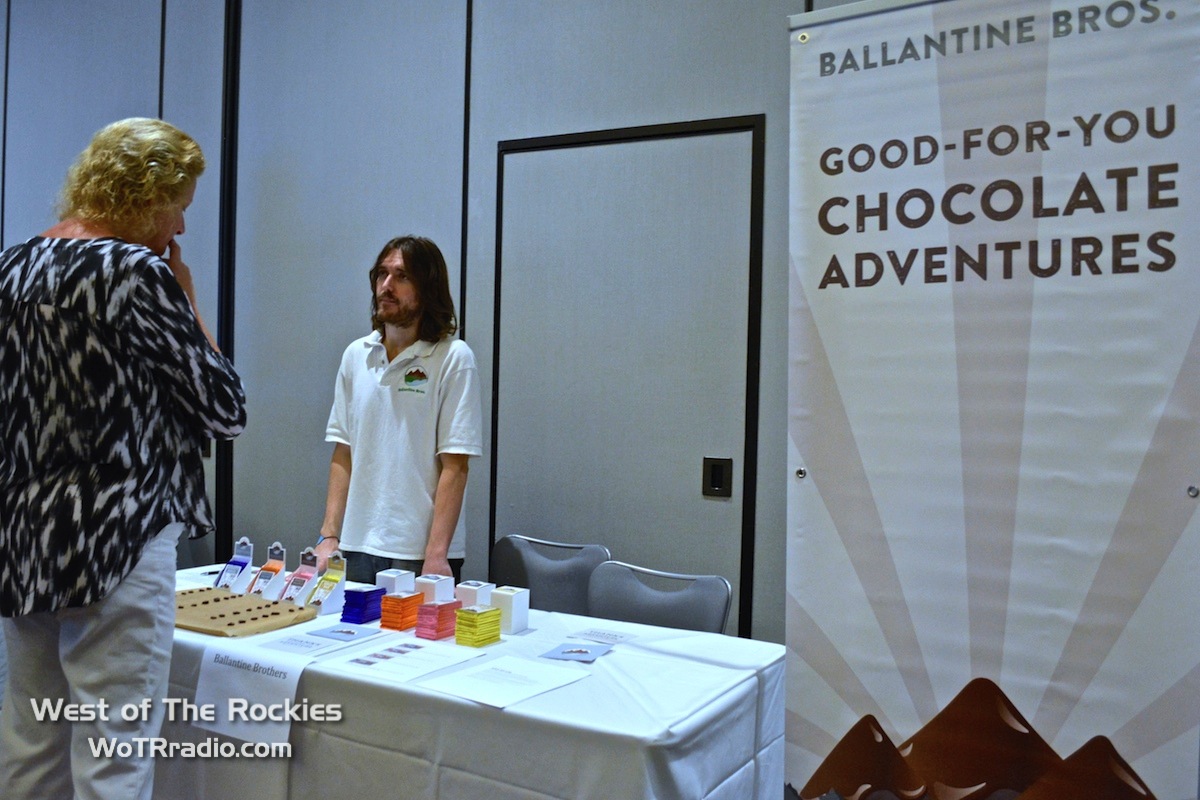

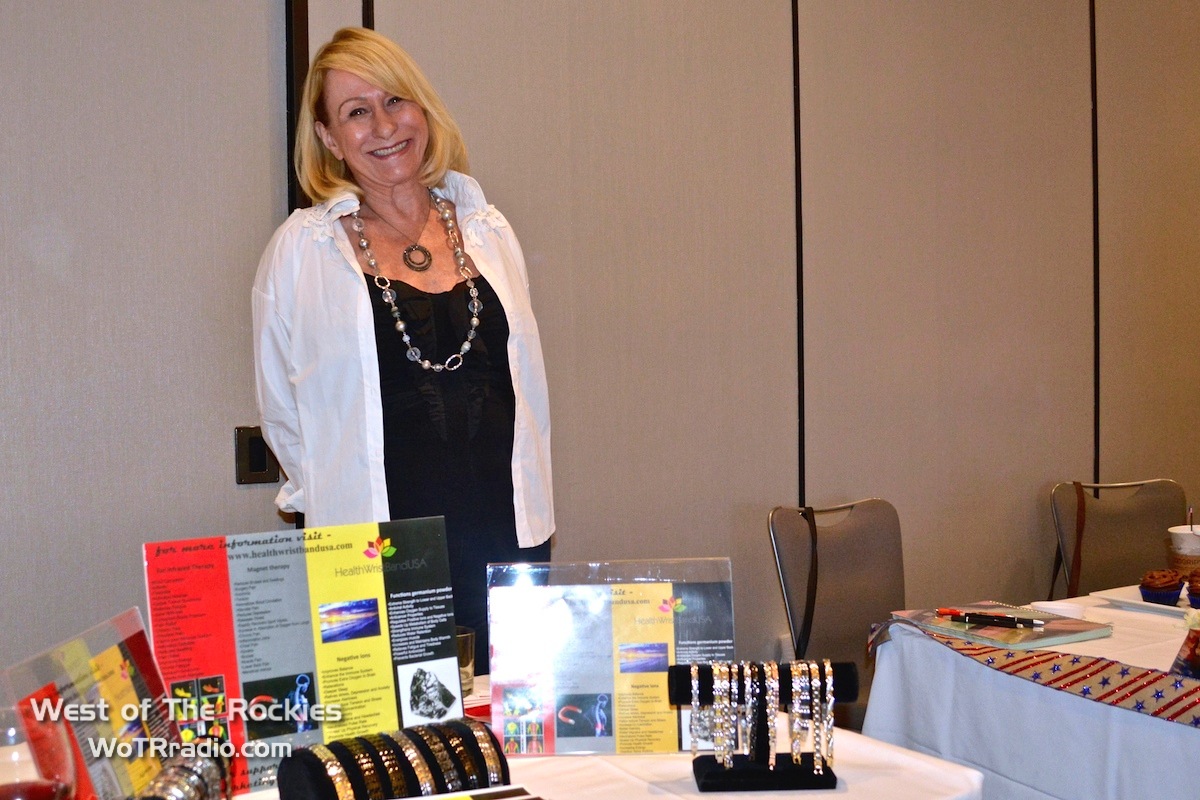
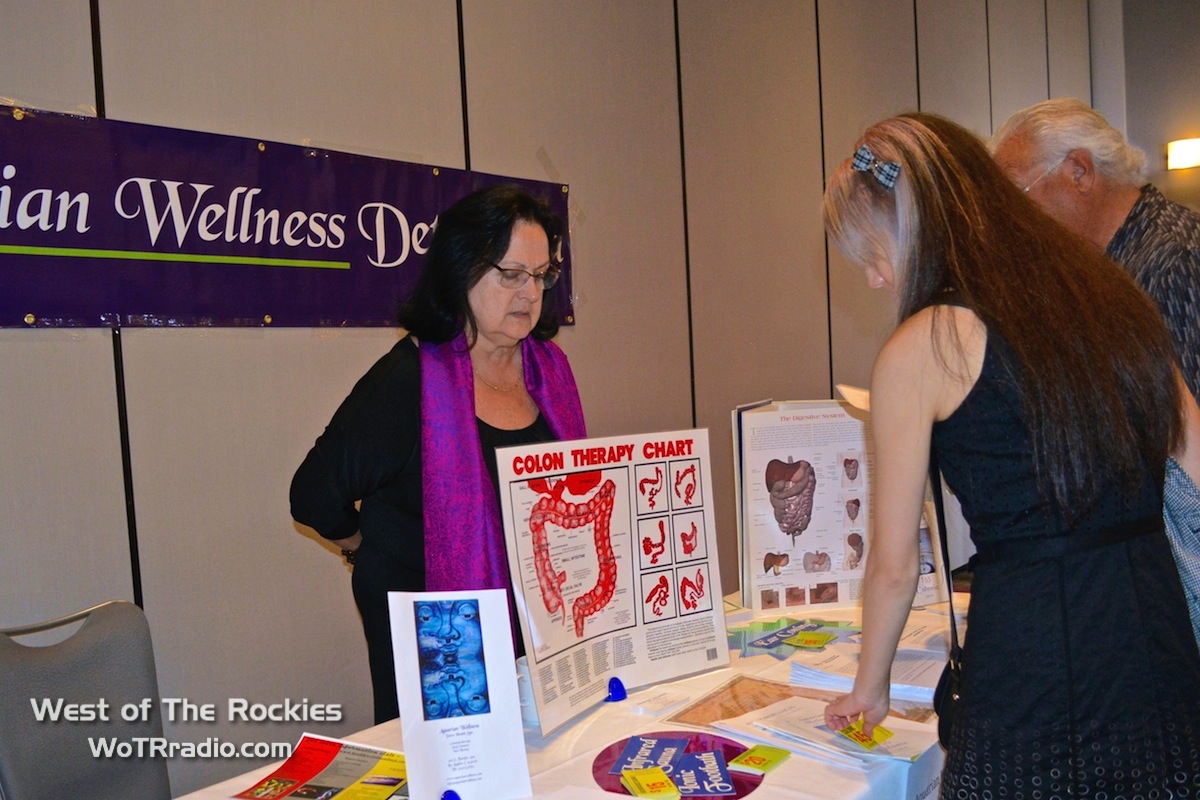

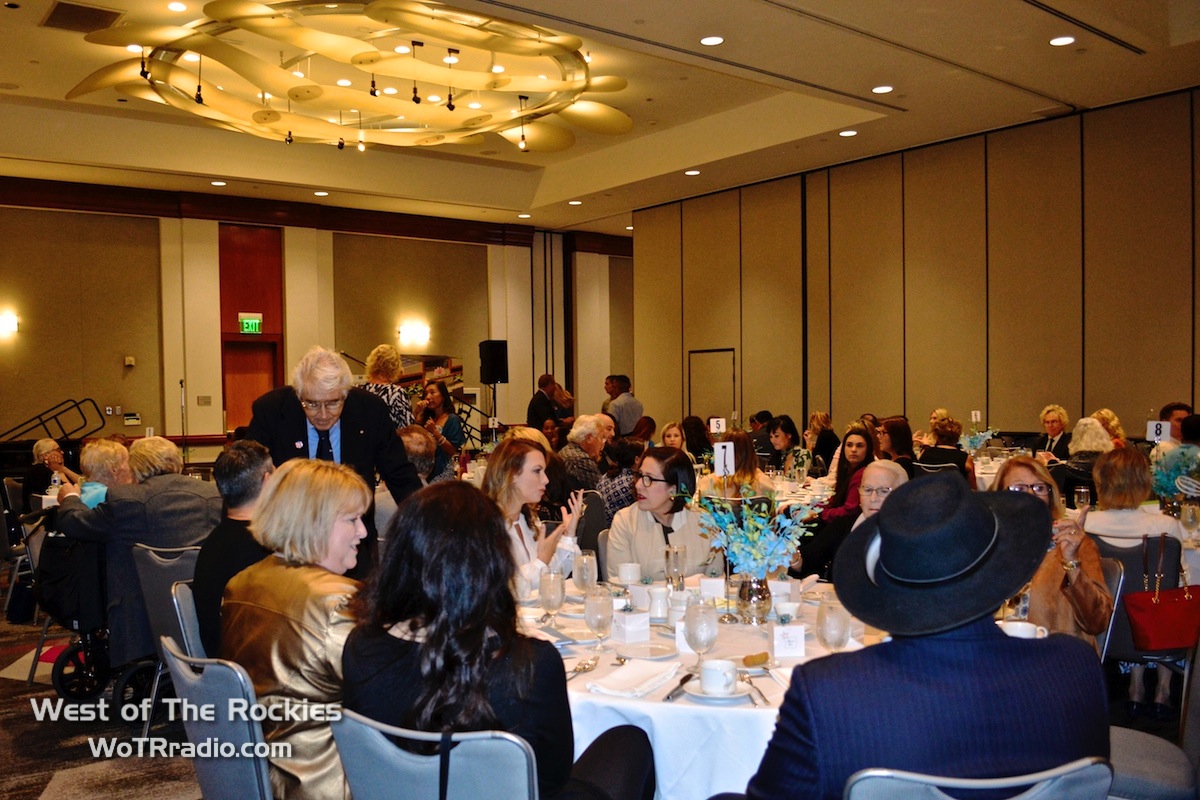


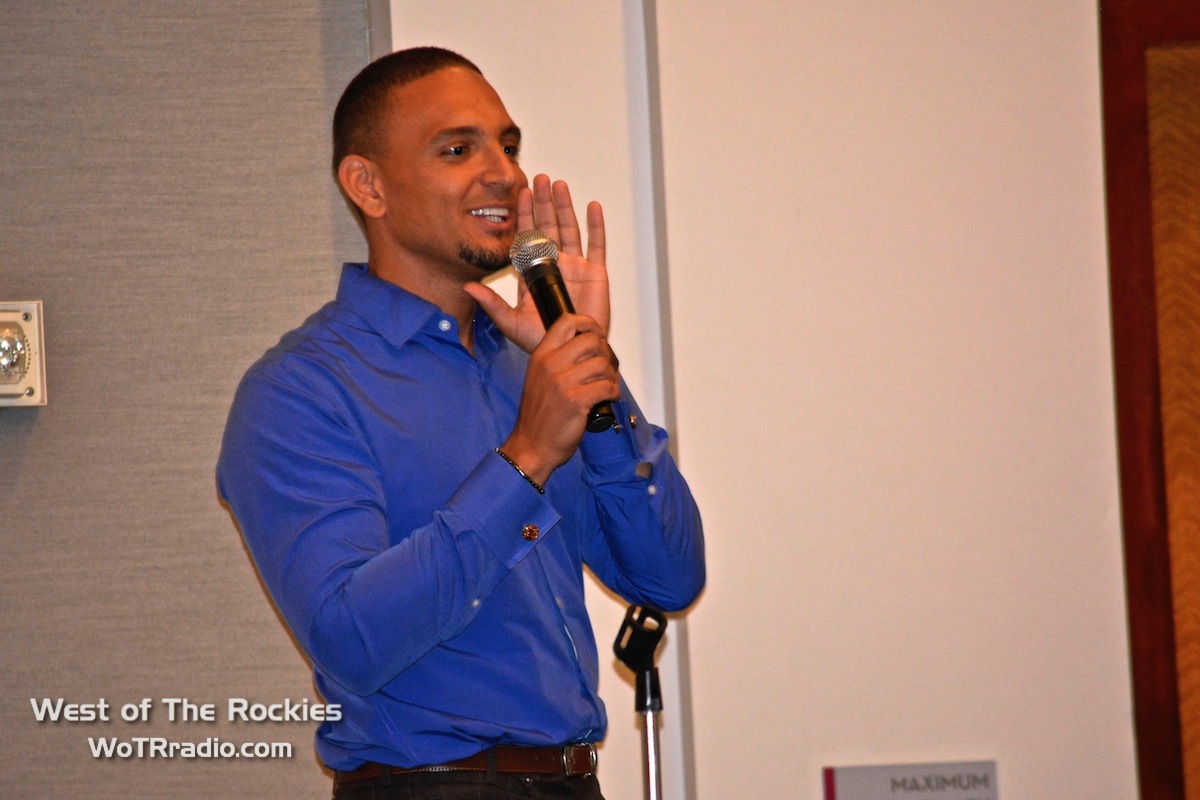

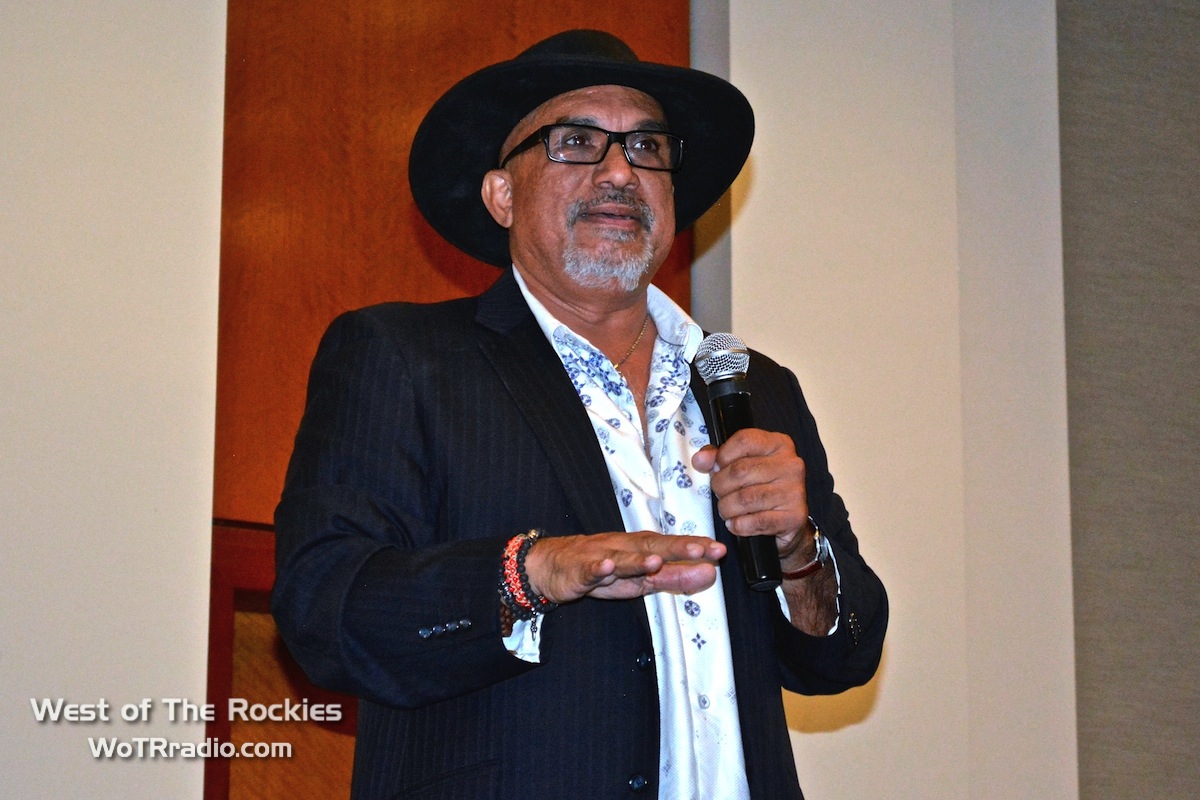

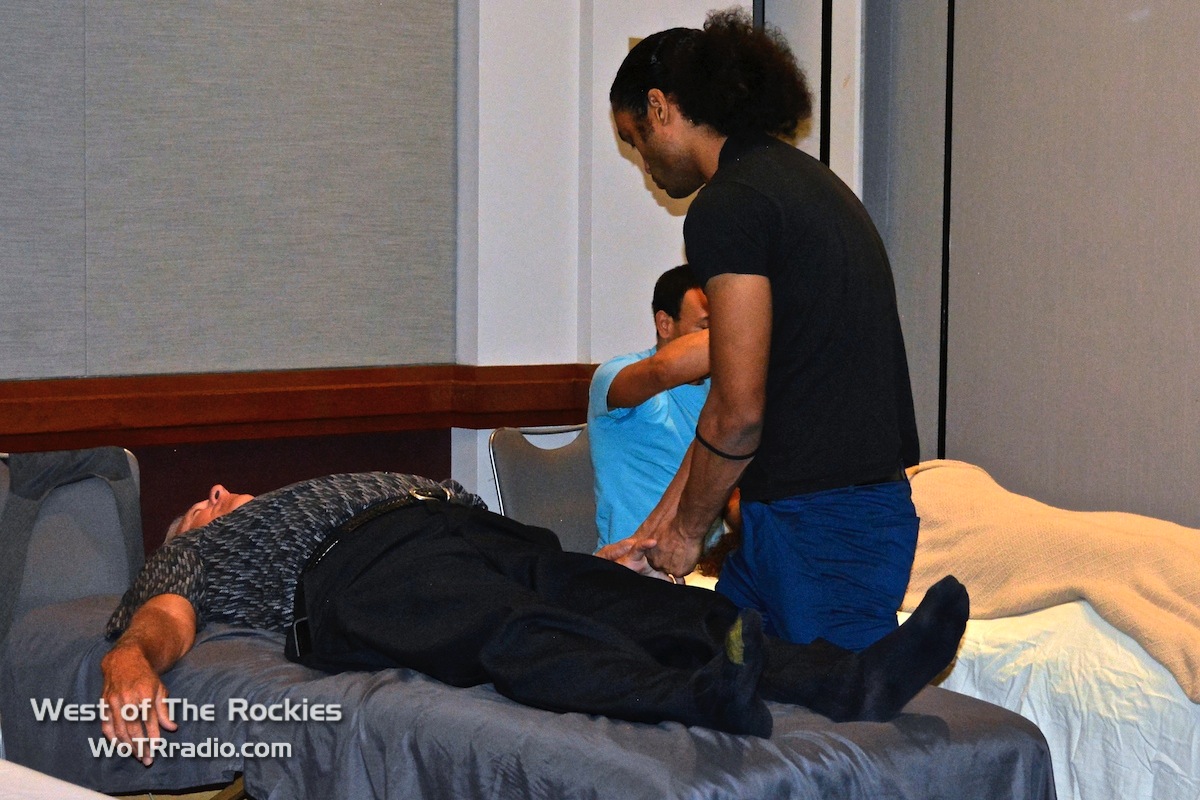
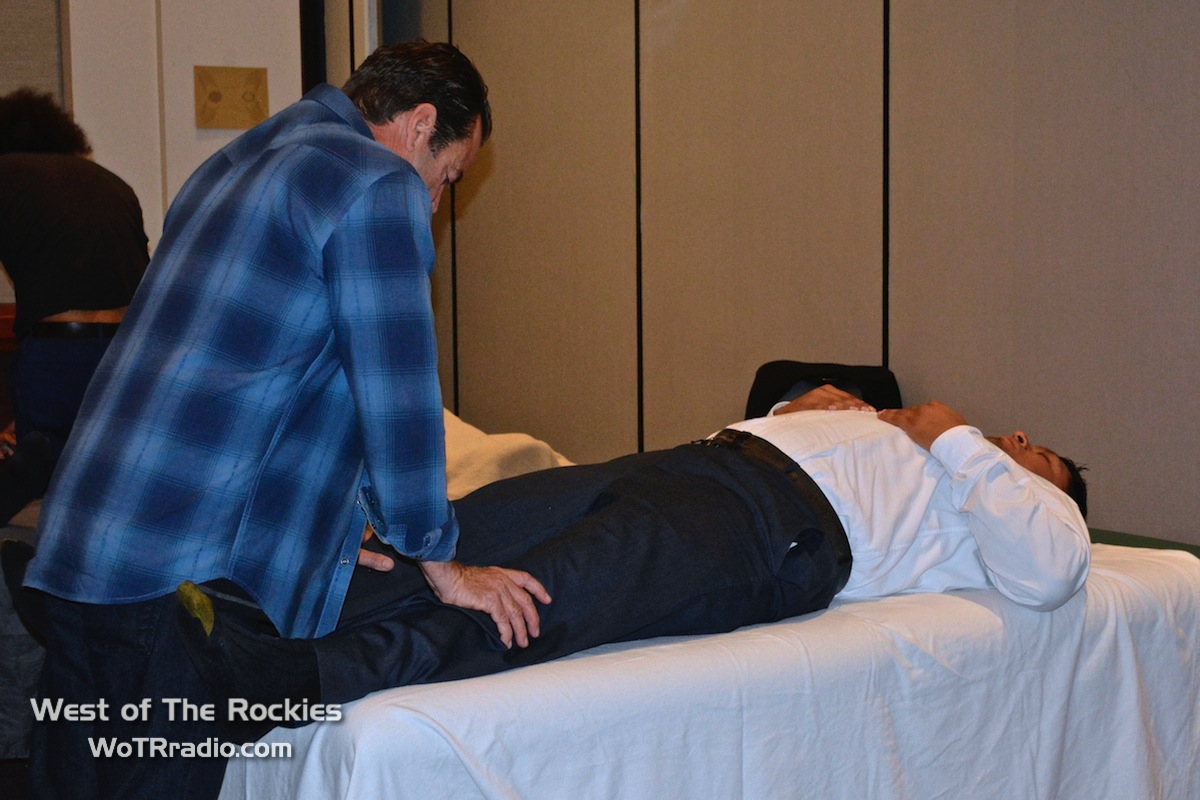
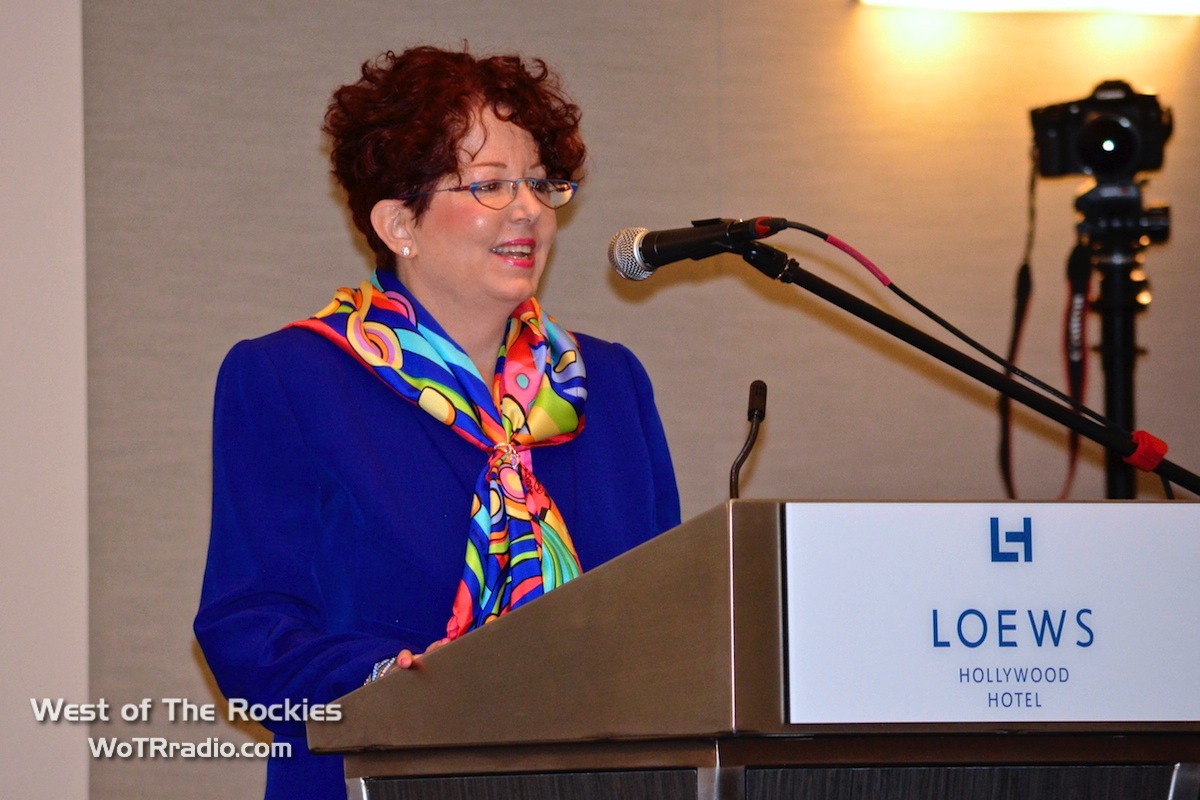

Spread The Word and Spread The Love -- Happy Veterans Day and A Huge 'Thank You' To Our Service Personnel, Past, Present and Future!
Stan Lee's Los Angeles Comic Con 2016
First things first – so, Comikaze isn’t called Comikaze anymore, which is definitely confusing. And if not confusing, at the very least it’s annoying. Does anyone really call the convention by its full name? That’s Stan Lee’s Los Angeles Comic Con. (In all honesty, we didn’t really see, “Comikaze,” as lasting too long. I don’t think it has the most positive of connotations for people, certainly not for Americans…). Anyway, that’s a petty complaint. Despite the name change, the essence of the event remained, and there was certainly no shortage of crazy costumes, amazing artists, and…Harley Quinns.
What would Stan Lee's LA Comic Con be without an appearance by the Joker and Harley Quinn.
So So Happy - Skelaminals booth at Stan Lee's Los Angeles Comic Con 2016.
The variety and quality of vendors was definitely up a notch this year. Maybe I was just in a shopping mood, but I feel that pricing and variety of goods did indeed see an improvement. WoTR favourites included a super-fun and creative booth by the name of Botti Vingelo (find them on Facebook & Etsy), selling general fantasy/goth/steampunk-style jewellery, with its stand-out items being a variety of earcuffs, making for extremely cute elfen-esque accessories.
We also had a great time at the So So Happy – Skelanimals booth, perhaps because the two vendors happened to be particularly friendly and comedic. In any case, they were happy to entertain our indecisiveness as we contemplated for a-little-too long which of the many sweaters to purchase. I can only imagine that this is the average struggle of a twelve-year-old emo/scene kid. They also threw in a couple of freebies, which definitely earns them a very positive shout-out from us.
We were also glad to bump into Alejandro Lee again this year, creator of the comic series, Sally Sprocket & Piston Pete, who not only writes but illustrates his own books. Steampunk-meets-Wild West, Pinocchio-meets-RoboCop, this storyline couldn’t get any more bizarre, but neither could it get more fun. This is definitely an indie artist to support and keep an eye on.
My Chemical Romance frontman & comic book creator, Gerard Way.
Besides that, something we had also (secretly) been looking forward to was the Gerard Way interview. Emo fan or not, we were interested to see what the lead singer of My Chemical Romance had to say about his comic-book career. It was fun to hear the updates on his latest comic series, Young Animal, but the interview was disappointingly brief, with Gerard having to leave at about an hour in, skipping the Q & A session, and leaving late-comers wondering what on Earth just happened. So yay for Mr. Way, but nay to the brevity of his appearance.
Maurice & Rob, the voices of Pinky & The Brain.
Of course, seeing Pinky & The Brain (well, OK, the voice actors thereof) was also pretty cool – that’s Maurice LaMarche and and Rob Paulson, The Brain and Pinky, respectively. Growing up with certain cartoons, and then later seeing the real-life voice actors behind those characters, is always a trip. It’s a cross between fun-and-exciting, and the uncomfortable tinge of feeling like you’ve finally grown up – yeah, those cartoons you used to watch aren’t actually real.
However, there were a couple pitfalls this year too. If we’re going to give a review, we’re going to make sure it’s comprehensive and honest. The first major downer that we encountered were the new opening hours. This year’s event saw its grand opening at 5pm on Friday. Closing time was 9pm. Perhaps LACC had to cut some corners this year, but the effect was most certainly undesirable – Friday lost a little of its excitement and hype, because it all of a sudden seemed like a bit of an add-on day, and the prospect of spending three hours putting on the costume and all that make-up just suddenly started to feel less worth the while. Now, I’m not saying Friday was dull – it just wasn’t quite the “grand opening”
This year's program guide cover was created by the amazingly talented artist, Camilla d'Errico.
There was also a lack of excitement and variety when it came to panels this year. There was no lack of panels per se, in terms of numbers alone but the number of repeats and similar topics to last year was just past acceptable. Admittedly, themes and topics don’t go out of style within a year, but a little more variation might have been nice. For newcomers, it’s great to have things recapped, but for those who have been to more than one comic convention, it would be nice to have a bit of change. The timetable also appeared a little more crammed this year, presumably because panels were reserved only for Saturday and Sunday, with Friday being converted into a “vendors only” day. This was a little sucky, especially given that Friday had already been reduced to a mere four hours. Things were also somewhat lacking in the “headliners” department. Sure, there were plenty of popular names in geekdome at LACC, but, once again, not much had been switched up from last year.
Things got all "the power of Christ compels you" outside of the convention center on Sunday afternoon.
Things did, however, get turned up a little more outside the convention center. That’s to say, a bunch of angry Christians decided to tell everyone there that they’re going to hell. Really, things did actually heat up enough for the LAPD to decide to monitor the scene. (Yeah, the cops showed up to a comic convention…) Standing their ground and holding their fortress, they proudly held up signs saying, “Ask Me Why You Deserve Hell,” “Repent or Perish”, and “Cry To God,” among other death-metal band names. It was comic to watch (all puns intended), eliciting mainly “WTF?”s from people, with a bunch of fellow nerds standing around wondering what aspect of playing League of Legends lead them down the pathway of hell. Come on, y’all, it’s a comic and gaming expo. Not heroin. (Plenty of heroines though, I saw at least a couple of Wonder Women.)
With SLLACC happening on Halloween weekend, there was no shortage of super-cool accessories.
None of this should be taken as a complaint, constructive criticism at most. We love LA Comic Con, and will undoubtedly continue to attend. Being smaller than San Diego’s Comic Con International, this makes for easier attending, both in terms of ticket availability and in terms of crowd manoeuverability. And at $70, it’s still a great deal ($50 at the presale price, and that’s for the three-day multi pass).
Tl;dr Comic books, cosplay, crazy Christians, gaming, Harley Quinn Harley Quinn Harley Quinn, Deadpooldeadpooldeadpool, See y’all again next year!
Check out our Stan Lee's LA Comic Con 2016 Gallery
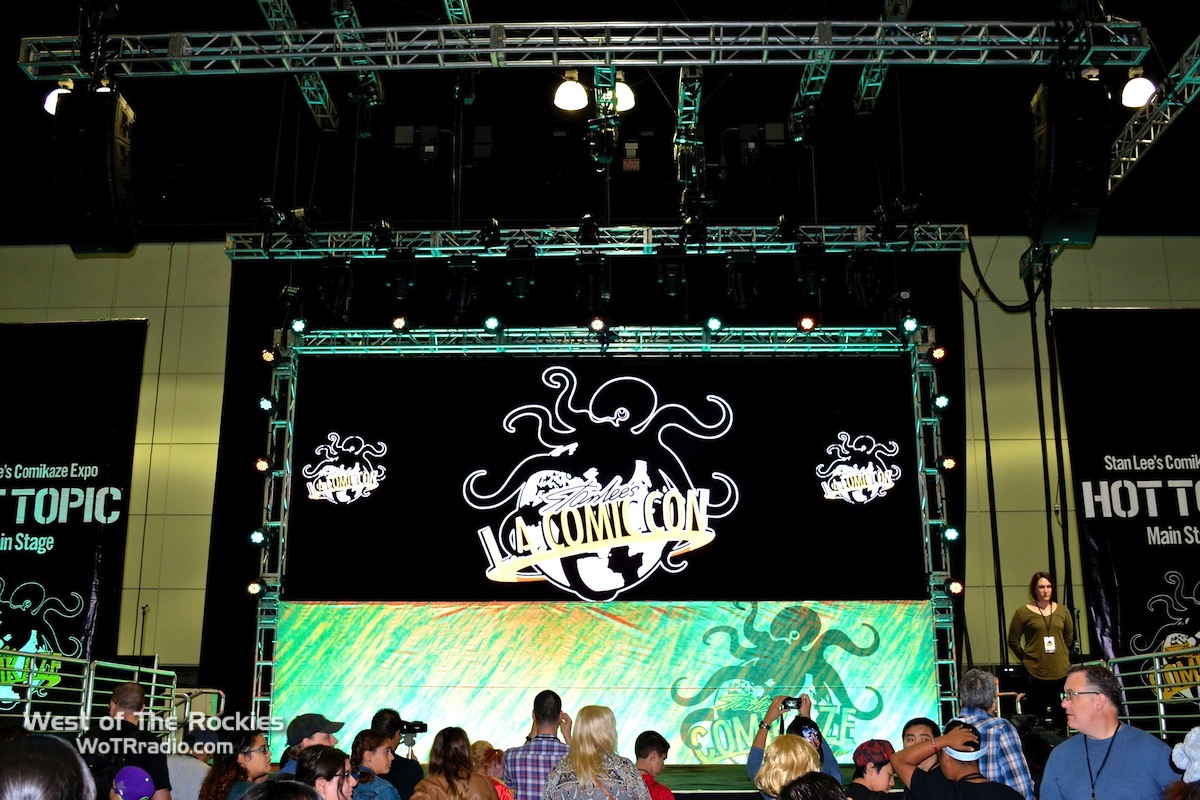



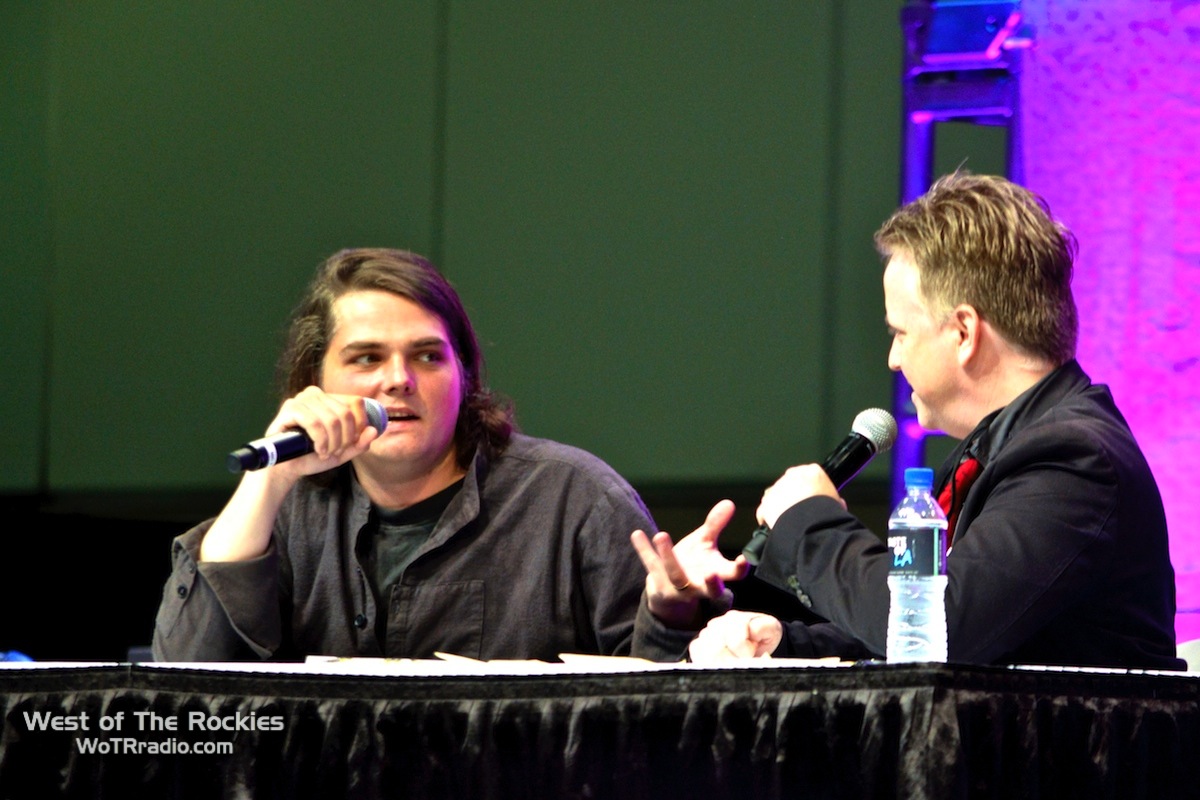
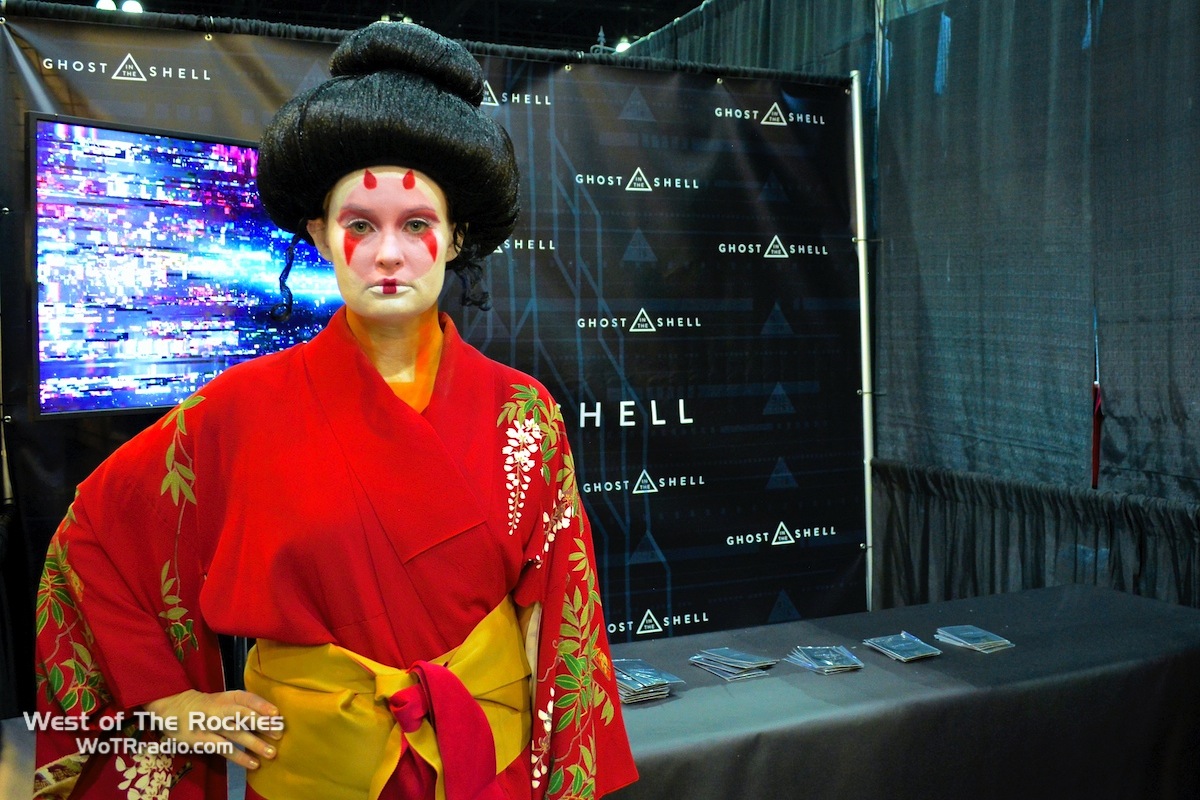







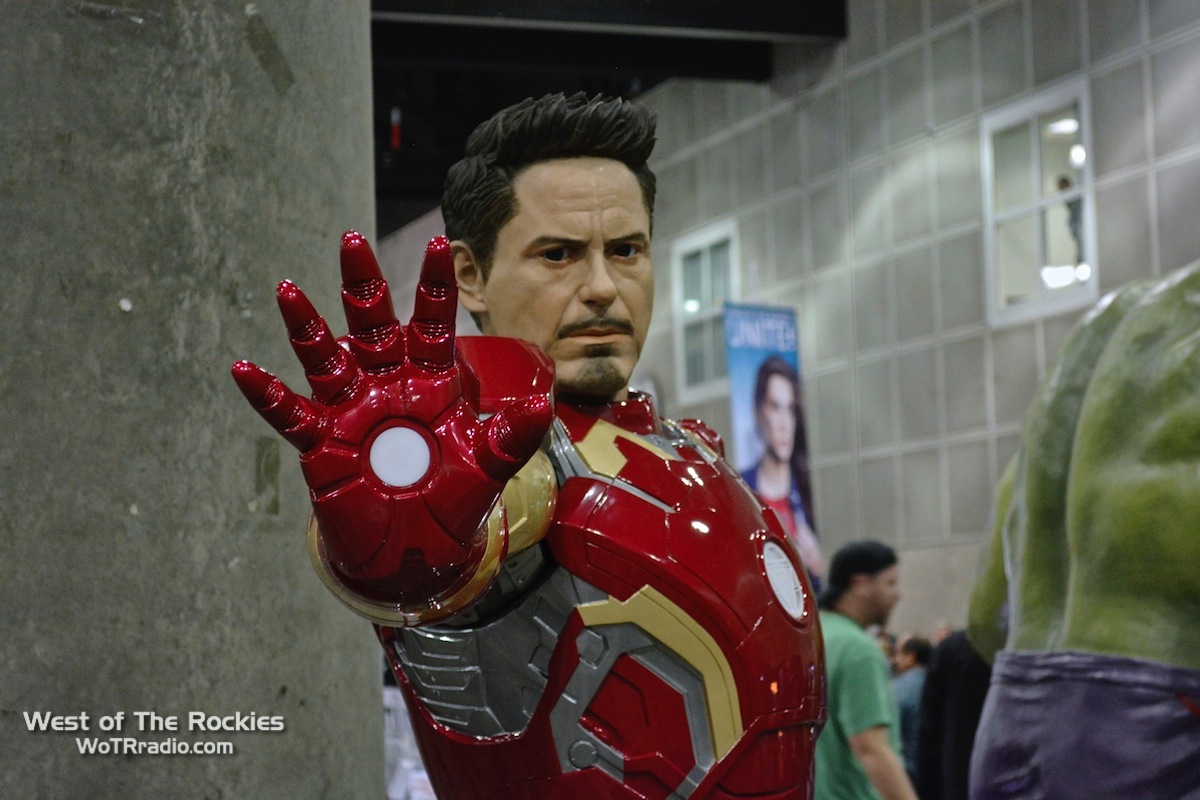
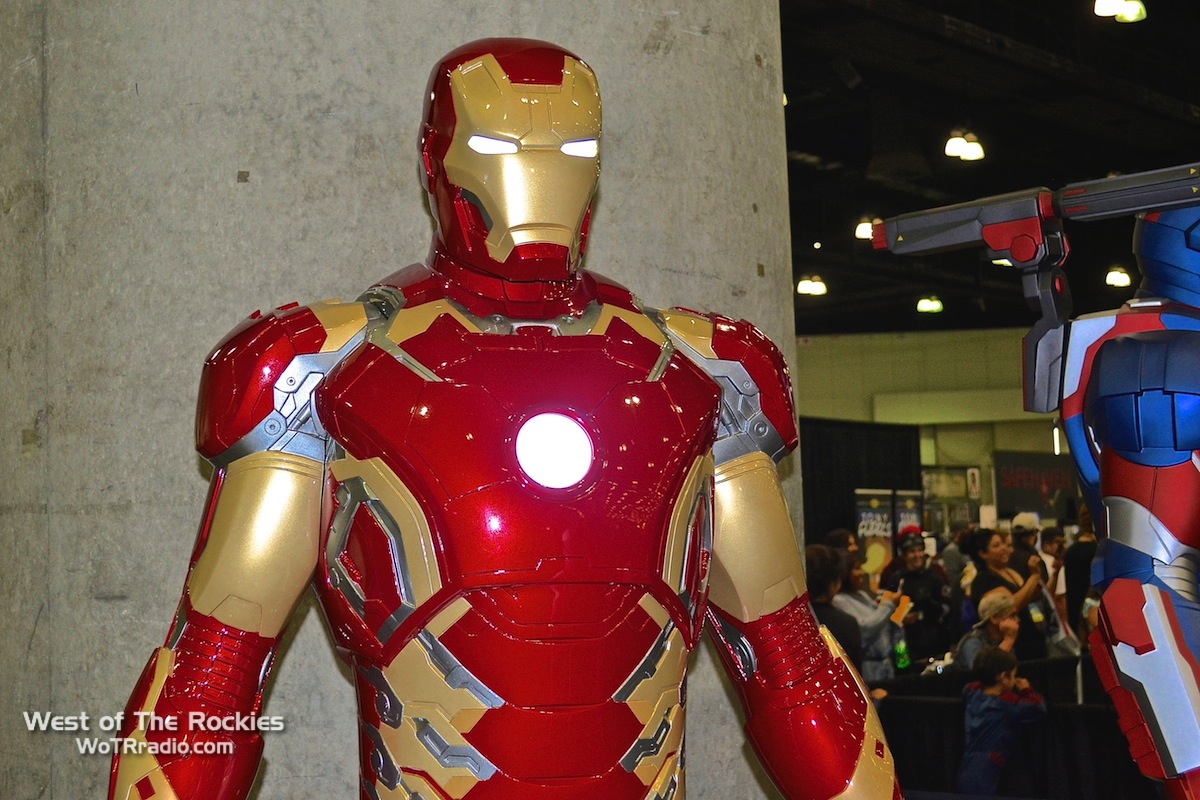










Spread The Word and Spread The Love.
The Paranormal Past, Present & Future of the Haunted Linda Vista Hospital: An Interview with Richard Berni of Boyle Heights Paranormal Project
Rich knows a thing or two about the paranormal. Having founded the Boyle Heights Paranormal Project back in ’09, he went on to adopt a few caretaking duties at Linda Vista Hospital during its uninhabited years, a time that saw dozens of film productions and music videos crews use the hospital interior as their creepy backdrop.
Alternative Health Treatment for Military Personnel: An Interview with Energy Healer, Valerie Heath, of Heaven & Earth Oasis
We’ve all heard of PTSD, especially veteran’s PTSD. Most of us have also heard of various “alternative” and complementary health treatments, such as acupuncture, chiropractice, massage, meditation, yoga, homeopathy, reiki and qi gong. Some of us may even be aware of more modern and emerging treatments, such as DNA Theta Healing and Matrix Energetics (both forms of “energy healing”). However, not many have heard of such practices being applied to veterans, especially those severely affected by the trauma of combat; for years now, mainstream medicine has only really offered “standard” methods of treatment to war veterans, despite their being most in need of holistic approaches of care.
Travis Walton: Reflections on "Fire In The Sky"
Travis Walton generally doesn’t require an introduction. For those of us that do want a quick summary, Mr. Walton presents us with one of the best-documented UFO abduction cases to-date, with a book by the name of, The Walton Experience, and a movie that goes by, Fire In The Sky. Working as a logger in Arizona in the 70s, Travis disappeared for five days, in what turned out to be an encounter with what could only be described as extraterrestrials. For further exploration on this topic, check out our previous interviews with him, especially last year’s special with Travis and Jennifer Stein.
For now, sit back and enjoy our quick catch-up session with Travis at Contact In The Desert.
The God Cells: Exploring the Stem Cell Controversy - An Interview with William C. Rader
William C. Rader obtained his medical degree with honours from the State University of New York (Buffalo) in 1967, subsequently carrying out his psychiatric fellowship at the University of Southern California Medical Center in 1971. He controversially had his medical license revoked in California, following a series of complaints by patients.
"The God Cells" explores Fetal Stem Cell injections for a variety of neurological and immunological ailments, while exploring the religious and regulatory roadblocks hindering its market approval at home.
In June of this year, a new documentary was released by the name of, The God Cells: Fetal Stem Cell Controversy, a movie by investigative journalist and filmmaker, Eric Merola, following the progress of a handful patients undergoing stem cell treatment under Rader’s supervision in Mexico. The film was truly mind-blowing, and definitely presents a strong argument in favour of such treatment for “incurable” diseases.
We're certainly not oblivious to the huge amount of negative press concerning stem cell treatment, a lot of which attacks individuals, including plenty of complaints in the media regarding Mr. Rader - though seemingly convincing a lot of the time, we have strong reasons to believe that not everything we read and watch presents us with impartial evidence. Our minds are still open regarding whether such treatment is all that it claims to be, and we merely urge the reader/listener for now to keep an equally open mind, both pro and contra.
William C. Rader - "The God Cells" (2016) © Merola Productions
Up until now, there has been minimal positive press about Rader, and stem cell treatment in general, at least as regards the U.S. In the spirit of fairness, we believe Rader deserves at least some defending in this discussion and the chance at an unbiased analysis. As Frank mentions at the end of the interview, we try to give listeners another piece of the puzzle in this whole discussion that hopefully will help people make up their minds, no matter which side of the fence they are on.
William C. Rader with Patient, Dani Burton - The God Cells" (2016) © Merola Productions
The media is powerful, and there are few devices out there that have been more powerful in the last several decades than the television – notice that a lot of the anti-Rader (and anti stem-cell in general) reactions have been sparked by TV, which tends not to be considered the most open and reliable of information sources. There’s a reason why we have the sarcastic saying, “If you heard it on TV, it must be true!” or perhaps more apt for nowadays, “If you read it on the Internet, it must be true!” Both CBS and the BBC have released anti-stem cell documentaries, both containing interesting information, but unfortunately also both blatantly biased. The two documentaries were painful to watch at times, shamelessly prejudiced in their approach of the matter. For instance, the BBC documentary sends an “undercover” patient, a lady with Multiple Sclerosis, to investigate Rader and his practice. She poses as a legitimate client (though from the get-go has no intention to actually pay or undergo any treatment), secretly filming her conversation with Rader. At times, it undoubtedly seems that Rader is being rather pushy with the treatment, earning himself the harsh title of “used car salesmen” by another medical researcher that appears in the documentary. Of course, pushiness makes no-one look good, especially not when it comes to medical services – Rader’s services may well be driven by the prospect of financial gain, something that unfortunately can’t be denied for most people selling a service. Then again, it’s not exactly a crime to have at least some interest in earning a good income from one’s job; in fact, it would be odd not to. Furthermore, let it be known that all of Rader’s patients sign a consent form, which contains the phrase, “I understand that Dr. Rader has [a] financial interest in the (FCTP) [Fetal Cell Therapy Program]”. So, if there ever was any doubt, it should at least be clear from that. For now, though, we’d like to give Rader the benefit of the doubt, at least as regards his sincerity when it comes to the treatment itself; for now, we’d rather not condemn a potentially world-changing treatment because of the unpleasant display of an individual.
Jerry Kramer, NFL Champion, Green Bay Packers, receives fetal stem cell therapy in Tijuana, Mexico - "The God Cells" (2016) © Merola Productions
However, this is unfortunately exactly what both of the documentaries do: they try to make stem-cell treatment look bad by making the service-providers look bad. At very least, I feel that they should have made it clear at which point criticism of individuals and organisations ends, and criticism of the treatment itself begins.
In my opinion, it seems that perhaps a fairer review could have been given if the undercover patient had actually undertaken the treatment; though, admittedly, some doubts as to its safety were presented, which is presumably why this did not take place. Nevertheless, it still seems somewhat ridiculous to put so much effort into exposing Rader, but never once actually investigating the possibility that the treatment itself may be beneficial. In any case, it is pretty clear that what the exposé boils down to is an attack on Rader, rather than an attack on the treatment type itself; it’s just unfortunate that most people will not see it in that way, and such reports undoubtedly tarnish the face of stem cell research overall.
As a small side-note, it’s interesting to point out that the press nowhere near as much covers “normal” doctors in the US, who are nearly all under contract by various pharmaceutical enterprises to push medications on patients, despite often being unnecessary. Yes, $25,000/$30,000 is a lot of money (those are the prices that Rader has been known to charge for initial stem cell injections); however, what about treatments such as chemotherapy? Given “standard” anti-cancer drugs, the average cost for one extra year of life, as paid by patients and insurers, was determined by researchers to be $207,000 in 2013. And that’s just the average for one year of life. If Rader is a “used car salesmen,” then the medical industry in the US must surely be a used car market; if being pushy when encouraging treatment for terminally-ill patients is his crime, then we are all surrounded by criminals.
Disappointingly, such documentaries uncannily resemble yellow journalism, what with their scandal-mongering and sensationalism, which is rather discouraging when you consider the high esteem in which companies such as the BBC and CBS are held.
Below is a transcribed excerpt from the “60 Minutes” documentary segment on stem cell research, specifically addressing the undertakings of a man named Dan Ecklund (aired January 8th 2012). We do, in fact, have our doubts about Ecklund’s practices and reliability – he certainly did not paint a good portrait of himself, and when the fetal stem cells used by him were put up against lab scrutiny, they were disappointingly shown to be of very low quality (most of the cells appeared to already be dead).
Unfortunately, it seems that he was a man who truly believed in the cause, but was simply not knowledgeable enough about the procedures involved (he had had no prior medical training). Alas, this in no way justifies what he was doing (he certainly shouldn’t be carrying out medical procedures unless fully trained in the field), but, once again, we seem to be presented with an example of where the individual exhibits reasons to doubt them and their practice, but the practice itself is not to blame.
As always, though, most people will not differentiate between the two; most likely, the majority of viewers will end the documentary with a negative opinion of stem cell treatment, further diminishing the chances of such treatment being publically accepted in the near-future.
Context of excerpt: Ecklund has just been questioned about whether his practice is a con or not, upon which he answers that he has injected himself with stem cells, and that he would not do so if he believed it to be a con. The conversation continues:
Scott Pelley (Journalist): “Putting them in an 11-year-old boy is an entirely different matter […] without any medical studies that have been published in major journals that have suggested that stem cells have any efficacy.”
Dan Ecklund: “You keep going back to this point, that they are not published in major medical journals.”
Pelley: “It is the standard of the world, I do keep going to that point.”
Ecklund: “I keep telling you that they are not going to get published in this country, because when someone does try to do it, then they have 60 Minutes come and visit them.”
There are a couple of interesting points brought up in this excerpt, which Rader himself has also mentioned on numerous occasions. Firstly, foetal stem cell researchers are often criticised for not having published research papers; the fact is, there have been several papers published in other countries, but the medical field in the U.S. seems to be highly lacking in this department. It seems safe to assume that the reason is not so much that U.S. researchers don’t want to publish papers, or that they have no publishable evidence, but rather that the stigma attached to stem cell treatment is so negative, that most doctors and scientists are not willing to risk the ensuing demonisation, and even possible medical license revocation – and that is, if the paper is even permitted to be published in the first place. As Ecklund says during his interview/interrogation: “they are not going to get published in this country, because when someone does try to do it, then they have 60 Minutes come and visit them.”
Another interesting point, though, is the journalist’s constant emphasis on established “standards” – he always brings it back to the point that Ecklund is operating outside societal and medical norms. But, wait a minute – when has a true revelatory discovery ever been made without deviation from the “norms”? How are we ever to expect a paradigm shift to occur, if the rules dictate that we can only stick to the set standards of society? That would surely just be oxymoronic: the very definition of a paradigm shift is, “a fundamental change in approach or underlying assumptions.” And, until that happens, it appears that many medical researchers will remain stuck in this Catch 22 (not just when it comes to stem cells, but other treatments included, such as potential cancer cures).
Furthermore, the unfortunate truth is that those who are ill, or those with loved ones that have a serious disease, simply do not have the time to wait around for all the boxes to be ticked (the average time for FDA drug approval is 12 years, costing an estimated $800 million per drug): they need treatment, and they need it now. Waiting another ten, twenty years is simply not an option for many – and they’re willing to take the risks necessary, especially if not taking them means certain death or lack of quality-of-life. For many people, the odds are a no-brainer.
At WoTR, we generally oppose ambush journalism, and even more so when an individual has clearly been lead into an entrapment-style situation; again, we believe in fair game. From the get-go, people who find themselves in such ambush situations have no real chance of explaining themselves properly or coming off as respectable in any way. The very act of interviewing them in such a manner evokes negative feelings and thoughts in the audience: alas, why would someone be interviewed in such an interrogative fashion if s/he were a good and respectable person in the first place (or so the thought goes)?
One of the main arguments put forth against stem cell treatment, and the reason why Rader’s medical license was revoked, is that it appears to be ineffective for a number of people. Rader was taken to court, and had three patients testify against him, one of whom only had one injection (declining any follow-up treatment), another who had never even undergone any treatment, and only one of whom actually underwent the recommended course of treatment (the injections were discontinued after the third unsuccessful transplant). In both of the latter instances, when the initial stem cell transplant indicated no signs of improvement, the patients were offered follow-up injections free-of-charge. The patients in question had no negative side effects as a result of the unsuccessful treatment.
The following is taken from the official court document: “It is possible that the Respondent is completely correct in his assessment of the efficacy and future of foetal stem cell therapy. If he is, neither science nor the standard of care has caught up with him. If he is not, he poses an unacceptable risk to the health, safety, welfare and interest of the public. Either way, he is operating outside of the standard of care.” Again, we encounter this emphasis on the “standard” of care: even if it means at the cost of the patient’s welfare. Conformity is always valued above doing the “right” thing.
Furthermore, it should be added that the cells used are harvested in the Republic of Georgia, tested in Germany, and then shipped to Mexico, never once touching U.S. soil, meaning that Rader was therefore operating outside the jurisdiction of the State of California. Also, Rader himself had 18 witnesses fly in to testify in court; yet, the medical board convinced the judge that they could only have four witnesses. To add insult to injury, the California Medical Board could not find a single expert who had any clinical experience with the application of foetal stem cells to testify on their behalf, leaving the expert witnesses they did find utterly confused by the variety of remissions that Dr. Rader’s company had acquired, subsequently trying to explain them away by blaming it on the “placebo effect.”
One of the other main issues brought up in the trial was that of genetic matching, as is done in an organ transplant or a stem cell bone-marrow transplant, arguing that, without genetically matching each patient to respective foetal stem cells injections, the body will reject the cells; thus, in order to avoid this, each patient should require immunosuppressive drugs (so they say). However, in all of Rader’s twenty years of practice, during which he has treated well over 3,000 patients, he never once gave immunosuppressants to his patients, nor did he ever genetically match their foetal stem cell injections. He did not do this out of malice or callousness, but rather because he had genuine reason to believe that neither was medically required. Even though Rader was aware that he was not operating within the “standards of care,” he refused to give his patients (some very young and/or immunocompromised) immunosuppressive drugs, knowing that they might well kill them, if not their disease. In fact, some time prior to the trial, he had actually voluntarily surrendered his license, but this surrender was rejected. Why? For no other reason than that the legal system wanted to see his license revoked. Not even Robert Shapiro (O. J. Simpson’s lawyer during his murder trial) could save him. This is truly shocking. Does the government really view a doctor’s attempt to cure terminal diseases as worse than a double homicide?
In any case, let’s return to the main point of ineffective treatment. Firstly, ineffectiveness to some patients (or even many, for the sake of argument) is simply not a legitimate reason to denounce any medical treatment, and certainly not reason enough to revoke someone’s medical license. Even less so, when said treatment is generally found to be ineffective at worst, as opposed to dangerous/fatal at worst. And, furthermore so, when that treatment has already been explained to have a chance of being ineffective – Rader, alongside many other scientists, make it very clear that the treatment might help, but that there is no guarantee (this is also made very clear in the documentary, The God Cells: Fetal Stem Cell Controversy). In many cases, the treatment is indeed unsuccessful; however, it is extremely important to remember that, in those cases, the stem cells generally have no effect on the body. That is, unlike something like chemotherapy, where the treatment may help at best, but damage or even kill the victim (sooner than otherwise) at worst, stem cell treatment generally has no negative side-effects. How many oncologists have their license revoked for pushing unsuccessful (and often seriously harmful) treatments on their patients? If mere inefficacy of a medication or treatment is sufficient to have someone’s medical license revoked, then we’d be living in a world without any doctors…
Despite this, it has to be said that we would certainly like to see more statistics and research findings concerning this matter, especially on Rader’s website, StemCellOfAmerica.com, where no statistics are presented whatsoever; instead, we encounter qualitative descriptors such as “often” (i.e. “Often, in cases where the diseases continued to worsen, our patients have reported substantial improvements following the Stem Cell treatment”), and vague phrases such as, “Utilizing tests more sophisticated than those regularly used in the United States,” unaccompanied by any further explanation.
"The God Cells" documentary is available to order on Amazon.
Yet, despite the lack of statistics and details on the website, the results displayed in the documentary are nevertheless astonishing, and even when assuming a low success rate, it appears that this is enough to justify the efficacy of stem cell treatment. That is to say, even if we, for the sake of argument, were to assume that only those patients shown in the documentary had a success story, then (considering that Stem Cell of America has, thus far, treated approximately 3,000 patients) a success rate of 25 out of 3,000 still seems like an amazing figure, considering that the illnesses encountered were all “incurable.” I would think that most people in the world that either had an incurable disease, or a loved one suffering from such, would probably give a 1/120 statistic a chance, if it meant cure or at least considerable improvement in symptoms.
What other doubts are there when it comes to stem cell treatment’s safety? One of the main (and hopefully only) evidenced medical concerns was that a young Israeli boy suffering from ataxia telangiectasia (AT), an incurable, neurodegenerative disease, developed brain and spinal cord tumours four years after his neural stem cell treatment in Moscow (this was also brought up in the BBC documentary). Doctors are certain that the tumour was a direct result of the injected stem cells. However, things that were not mentioned by the documentary host include the fact that the tumours were found out to be benign, and that researchers claim the cells were poorly characterised prior to transplantation. Understandably, no tumour is good news, benign or not. Especially when occurring in the brain or spinal cord, they can still wreak havoc (the boy had already begun to experience headaches). However, there is still a huge difference between a malignant and a benign tumour, especially as regards the reactions that it might evoke in people. It particularly matters when it comes to evaluating a type of medical treatment: for many, a miniscule chance of developing benign tumours may well be outweighed by the prospect of potentially having a “normal” life again, so it seems wrong to omit such details. We all risk a potentially adverse reaction and negative side-effects every time we take any sort of medication – even something as simple as aspirin can result in death (if an anaphylactic reaction occurs). If the possibility of a negative reaction were to put everyone off taking any medication, then the entire medical industry would surely crumble, most of all the anti-cancer businesses. My point is, as it stands, one bad reaction in thousands is nothing compared to the close certainty of, say, chemotherapy having negative side-effects (often including a faster and/or more painful death than by cancer itself).
On to the second point, though, the likelihood that the stem cells in question were poorly characterised prior to transplantation – that is to say, the preclinical safety measures were most likely not adhered to, thus increasing the risk of the cells growing inappropriately. Not only that, however – it seems likely that other clinical guidelines were not followed as well. I won’t go into all the details here, but some googling and reading of online discussions will provide more information for anyone interested. The comment section at
the-scientist.com/?articles.view/articleNo/27148/title/Stem-cell-therapy-triggers-tumor/
is interesting, as is the blog entry on molphil.wordpress.com/2009/02/20/primum-non-nocere.
As one commenter on the-scientist.com points out:
“Although the Russians claim to be using "neural stem cells", they are not. They essentially take a whole fetal brain, put it in a cuisinart, and inject it uncharacterized as a graft slurry. This case has no bearing whatsoever on the legitimate biology and uses of stem cells, particularly neural stem cells.”
Furthermore, it should be noted that there had been no prior indication that stem cell treatment would help the disease in question (AT), so it was a highly experimental risk to take at best. In addition to that, the boy’s disease listed symptoms such as neurodegeneration, immune deficiency, and cancer susceptibility (among others), which must surely be taken into account when judging the fact that he developed tumours; at very least, it should make us question whether the treatment should have been carried out in the first place. Given these facts, can we really judge stem cell treatment in general, when we are only looking at a very specific case where standard protocol and clinical guidelines were most likely not met? Once again, it would be nice to know what the exact statistics are, specifically how often tumours are formed as a result of stem cell treatment. Without that knowledge, we can only assume for now that it was a one-off occurrence.
In any case, though we unfortunately only had an hour with Mr. Rader, and would certainly jump at the opportunity to discuss matters further with him, we managed to crank out a super informative and interesting interview, questioning Rader on ethical, functional, and political issues of stem cell treatment.
One of the main ethical issues attached to this topic is the question of whether it is morally right to allow the use of cells from aborted foetuses. In general, those opposing the use of dead foetuses are those with a religious background that believe in the sanctity of the foetuses’ life. Many of these people will argue that, because the foetus is viewed as being on par with any other human life, it is therefore wrong to use it, because using it would involve killing it. However, such arguments appear to completely miss the point of the foetuses being dead already.
At its core, the question should probably read more like this: given that the foetuses have already been aborted, and the appropriate permissions obtained, should there be any more of an ethical issue in using the cells for research and treatment than there would be in using the body of someone who has died and provided prior permission for use of their body (e.g. is on the organ donor list) for research or transplant components? Or, perhaps more closely relevant, in using tissue or organs from a deceased child, given permission from its parents? If someone believes that organ donation post-death is acceptable, it should follow that stem cell donation after the death of a foetus should also be allowed.
Another commenter on The-Scientist.com article made some really great points relevant to this:
“The practice of taking stem cells from aborted foetuses is no more or less desirable than the act of aborting foetuses in the first place. I suppose the extra distaste comes from creating a market for aborted foetuses, but whether this would ever affect the actual number of abortions being carried out is debatable. There is an argument (an old argument, I admit, and used for all sorts of questionable research) that, if the research is not done in countries operating under world's best practice methodologies (due to current legislation), then it will be done in less optimal environments and in countries with fewer scruples. And there is a plentiful supply of customers from the West willing to fund it. The end result is poor research and more suffering to the families who choose to try such therapies.”
Of course, there is also the question of how to avoid deliberate conceptions, with an abortion already in mind (most likely for financial gain); that is, how does one prevent abortion from becoming a business? Or how do we prevent a female family member from intentionally planning an abortion, in the hope of saving another ill family member? Though practical more so than ethical, such questions were also posed to Rader during our interview.
Religious or not, one could also apply the Slippery Slope form of argument so often used in ethical debates – though openly regarded as fallacious, it’s something that we should nevertheless bear in mind, since it is so often thrown about. In fact, this topic has various “slippery slopes” open for analysis. For instance, where do we draw the line at who really needs stem cell treatment? Should it be open to everyone and anyone? Someone with a life expectancy of two months? Two years? Youngsters with debilitating diseases? Or anyone, no matter how old, with a debilitating disease? Only someone who has tried all other options? At what point does one declare “all other options” to have been attempted? What if someone merely wants to maintain, say, their youthful looks, and thus regularly undergoes stem cell treatment, essentially in an attempt to delay the onset death. Is this right? (Not that it ever stopped billionaire David Rockefeller from obtaining his six heart transplants, though admittedly not officially proven; and, considering how well he hides his medical history, I guess we’ll never know for certain. In any case, it definitely is not illegal to obtain numerous organ transplants, and it’s certainly conceivable that someone rich and/or famous enough could do so, which is the main issue).
We touch on the above, alongside other, ethical dilemmas during the course of the interview. Putting the ethical aside for now, though, there are far more questions even beyond this: we also approach Rader concerning the trustworthiness of stem cell treatment, especially as pertains to the claims made by those who provide the service, and whether or not this type of treatment may be just another ploy by pharmaceutical companies to put more money in their pockets (much like, say, the increasing push for anti-depressants in the last few years).
We were extremely intrigued and somewhat relieved by Dr. Rader’s response. It appears that stem cell treatment cannot be patented, at least at the time of writing (in the US, as well as in Europe) – in the same way that DNA or any other part of the human body cannot be patented. This is clearly a huge drawback for Big Pharma, making it thus unattractive for most pharmaceutical corporations to get involved in this business. This, alongside the fact that successful stem cell treatments would severely reduce the earnings of such companies in regards to sales of medications and treatments (specifically those that treat terminal or “incurable” diseases). If you believe the Big Pharma Conspiracy to be true, or at least possibly true, then this should definitely set off some alarm bells. On the plus side, it means that we can rest (relatively) assured that Big Pharma is not behind the pro-stem-cell hype.
Admittedly, this cannot prove that individual clinics and independent doctors are trustworthy when it comes to the treatment, but it is nevertheless a relief to know that pharmaceutical companies cannot claim stem cell treatment for themselves, monopolise it, and then charge extortionate prices, unreflective of its actual costs and effects.
The legalisation of foetal stem cell treatment still seems to be a while away though, and for now we need to remain wary of why the medical industry and the government in the U.S. is so adamant to keep this type of treatment at bay. It is no secret that the medical industry is a huge business here. Should we not be suspicious that medication such as Nexium, also known as the “purple pill” commonly prescribed for acid reflux, could cost us more than $200 in U.S. (these prices are based on the year 2013), whilst only costing $60 in Switzerland, the next-most-expensive price in the world for the same drug? In the Netherlands, it costs $23. Neither of the latter are third-world, or even developing, countries. Specialty drugs for chronic diseases such as multiple sclerosis carry similarly inflated prices, e.g. prescriptions of Copaxone and Gilenya cost approximately $4,000 and $5,500, respectively, nearly three times more than the most-expensive price in other countries. This surely tells us enough about the pharmaceutical agenda in the U.S., and it doesn’t appear to be good news.
There is simply not enough room to discuss this topic in full here. For a great overview of the points mentioned above, we recommend checking out The God Cells: Fetal Stem Cells Controversy, for yourself. There are pros as well as cons to foetal stem cell treatment, and we merely want to clarify the pros a little more, both as regards the treatment itself as well as Rader’s involvement thereof. I think the question that all these discussions boil down to is this: If it were you, or a loved one, that had a terminal illness, would you give foetal stem cell treatment a try? I think the reality we have to face is that a lot of people would be willing to take the risk, if not doing so meant certain death. Legal or not, tried-and-tested or not, the prospect of impending pain simply outweighs the cons for the majority of human beings.
Help Spread the Love & Spread the Word!
Contact In The Desert 2016 Review
They Walk Among Us: Government Secrecy & New Disclosures Panel - Pictured from Left to Right: John Greenewald, Daniel Sheehan, Stanton Friedman, Richard Dolan, David Paulides, and Nick Redfern.
Joshua Tree National Park, home of the JTRC.
Joshua Tree. Mojave. The High Desert. A magnet for all things hip and New Age, the backdrop for every becoming photographer and a playground for the Burner folk. In the last four years, however, Joshua Tree has also bore witness to something honestly quite groundbreaking and significant in the world of Science, namely Contact In The Desert.
What is it, you ask? It’s a conference that annually takes place at the Joshua Tree Retreat Center, at the edge of the world-famous and sacred Joshua Tree National Park. A befitting location for such a conference, its renowned serenity and sense of unrestraint not only makes it a go-to place for yoga retreats and other comparably spiritual conventions, but it also just so happens to be a hotbed for UFO sightings and other similarly mysterious activities. Was any such exciting activity spotted during our time at Contact in The Desert? Be sure to read on and watch our summary video as we reveal all.
CITD 2016 took place from June 3rd to the 6th.
Contact in The Desert saw its first event take place in 2013, making this the fourth annual affair. The conference attracts people from all over the globe, giving academics, researchers, authors and experiencers an opportunity to gather and share their information, providing a platform for what they have to say and what truly needs to be shared with the world.
Whitley Strieber, author of Communion, during his fascinating Workshop
There’s something calming and soothing about the desert, its cool evening breeze, the open starry skies, a peacefulness that’s difficult to obtain anywhere else – as mentioned, it comes as no surprise that a mentally and spiritually enlightening event such as CITD should take place in a setting like this. And though the thought of a “UFO conference” may well evoke images of people sitting around in tinfoil hats and geeking out over every “mystifying” light spotted in the sky, CITD is so far removed from that, it’s no wonder that more and more people are now adopting the use of UAP instead of UFO (that’s Unidentified Aerial Phenomenon, for those yet unfamiliar with the term). In short, there’s simply too much of a negative stigma attached to the concept of “UFO” to make it applicable in any serious sort of context. Also, let it be known that the event is just so much more than merely a meeting of people discussing “UFO” sightings: CITD describes itself as an, “exploration into ancient astronauts, extraterrestrial life, human origins, crop circles, UFO sightings, contact experiences, and the need to know”.
The Extraterrestrial Agenda Panel. Pictured from left to right: David Wilcock (host), Patty Greer, Robert Bauval, Brien Foerster, Jim Marrs (not pictured: Walter Cruttenden, Gordon Davidson).
This year’s line-up featured world-famous author, Graham Hancock; prominent American historian and professional Ufologist, David Jacobs; and best-selling author, Whitley Strieber.
Other significantly noteworthy personalities in attendance included mystery writer and reporter, Nick Redfern; eminent Missing 411 and Bigfoot author, David Paulides; Ufologist and TV personality, Richard Dolan; acclaimed nuclear physicist, Stanton Friedman; highly influential Constitutional and Public interest lawyer, Daniel Sheehan; and John Greenewald, expert researcher and founder of the world-renowned underground government archive, The Black Vault.
One of the other speakers in attendance, perhaps most familiar in popular culture, was Travis Walton, considered by most Ufologists to be one of the best-known abduction cases to date (his story was turned into the movie, Fire In The Sky, back in 1993) - we’ve had the pleasure of interviewing Mr. Walton on several occasions in the past, and once again got the quick opportunity to catch up with him, getting his take on this year’s conference. A great spokesperson for the world of UFOs and all “abductees” out there, Travis never fails to amaze us with his genuineness, humour, and down-to-Earth personality.
Author Graham Hancock during the Q&A part of his workshop, "The Consciousness Connection: Psychedelics, Entities, 'Dark Matter' & Parallel Dimensions."
Evening number one, we had the pleasure of attending the CITD mixer, a chance for all attendees to hang out and socialise with their favourite authors and much-respected researchers and academics. There, we bumped into our good pals, Ron Patton and Clyde Lewis of Ground Zero, attending all the way down from good ol’ Oregon. We had a chance to sit down and catch up with Ron the next day, checking out what he’s been up to and getting all the latest on Paranoia Magazine and Ground Zero Media.
Day Two also had us attend a particularly interesting lecture by Graham Hancock, needless to say a personal favourite of ours, and an author that we simply cannot recommend enough for those not already familiar with his work.
George Noory being serenaded during his Birthday celebration.
Later that evening saw attendees in a particularly festive mood, as we celebrated George Noory’s birthday, lead host of Coast to Coast AM, and overall alternative news legend. The party saw music, a live band, and of course plenty of dancing. Who says ufologists and conspiracy fans can’t have fun too?
Day Three, knowing that the event was winding down and we would soon be leaving, we nevertheless tried to keep up our excitement and enthusiasm for interviews and lectures. One interview that we were particularly eager not to miss out on was Stanton Friedman, world-renowned nuclear physicist and original civilian investigator of the Roswell Incident. Having interviewed him on West of the Rockies in the past, the opportunity to personally meet and speak to him was a true honour.
Video still of a mysterious triangular formation seen over the skies of Joshua Tree during the CITD conference.
Alas though, what would a UFO conference be without some strangeness and mysterious sightings? Of course, there was the usual abundance of chemtrails (admittedly expected out in the desert just as much as in the city); we also encountered a rather ominous military presence, becoming particularly apparent on the Saturday, and presenting itself in the form of a rather excessive assembly of army personnel and an extensive convoy of military vehicles; included in the list of bizarre discoveries at CITD was an alleged UFO sighting (apparently a particularly prominent triangular formation – though unfortunately not in attendance at the Sky Watch itself, we did however do our research, and in fact passed a still of the video-footage through some editing filters – rather interestingly, we observed additional, possibly related, lights near the formation.
Dr. David Jacobs during his workshop, "Hybrids: How, What & Why?"
Sunday’s workshops included Whitley Strieber’s and David Jacobs’, another two favourites of ours, never failing to present mind-blowing and difficult-to-argue-with research.
Vendor booths at CITD stocked with a wide array of whimsical gifts and mystical artifacts.
On top of that, CITD provided some good ol’ retail therapy of the whimsical and mystical kind, including a lovely couple selling, “Hippie Dippie’s Crystal Candles,” special handcrafted, chakra-themed candles, containing powerful geodes and gemstones that illuminate when lit (yep, it sounds New Agey, but the work put into making them was truly remarkable to watch); there was also a store that appeared to focus mainly on making and selling didgeridoos, quite an interesting and calming soundtrack whilst strolling around; furthermore, we came across a booth selling special stones that allegedly protect from EMF radiation, claiming to reduce the risk of a range of pains and diseases, including cancer, fatigue, joint and muscle pain, especially when either worn on the body, or kept around electrical items such as cellphones.
A Transportal built by engineer and artist, Harlan Emil Gruber.
A particularly fascinating and pleasant individual that we had the enjoyment of meeting was engineer and artist Harlan Emil Gruber, a hard-working guy that devotes his time almost entirely to designing and creating what he calls transportals, interactive installations incorporating sacred geometry, colours, and sound-vibrations that can harmonise with the participant’s energy body, taking into account the Earth’s geometric grid to facilitate an “evolution of consciousness”: in short, he creates brilliant and one-of-a-kind meditation tools.
CITD was filled with fun and interesting people enjoying the cool desert nights.
A personal highlight for us, though, must certainly have been watching the movie Contact…in the actual desert. It couldn’t have gotten more apt than that. Other movies were also featured during the evenings at CITD, making this an all-day and all-night round fun affair.
Make you're plans to attend CITD next year and find out why USA today called this conference the "Woodstock of UFOs."
Don't forget to spread the love and spread the word!
Sex, Drugs & Rocket Science: The Occult World of Jack Parsons with Adam Parfrey of Feral House
Adam Parfrey’s fearless publishing style has lead to an invaluable contribution to the modern literary world – he dares to venture where few men dare, releasing information to the world that is absolutely priceless. Known for his risqué and unconventional choice in books, their content and subject-matter provide insight and illumination into topics that the general public, for the most part, has never stumbled upon or even heard of.
Examining the Esoteric Themes of Kubrick's "Eyes Wide Shut" with Jay Dyer
Actual Venetian masks featured in Eyes Wide Shut. Photographed on display at the Stanley Kubrick exhibit at the Los Angeles County Museum of Art (LACMA) on March 2013.
Jay Dyer is a real gem in the world of all things conspiracy Hollywood – his approach to analysis is interesting and fun, whist thorough and mind-expanding. Jay has written on a myriad of topics and movies, but on this show in particular, we focus on Stanley Kubrick’s Eyes Wide Shut; of course, we occasionally drift off-topic, and what’s a Kubrick-themed show without at least some mention of 2001, The Shining and, of course, the Moon Landing!
His contributions in literary and film analysis are invaluable, providing us with plenty of things to contemplate and leading us down trains of thought we’ve never even considered before. That is not to say, of course, that everything Jay says should be taken as Gospel, and we certainly wouldn’t encourage anyone to do so (himself included, I should think) – he analyses and theorizes, leaving it ultimately up to the reader to come to their own conclusion. Whether you agree with his ideas or not, they certainly still make for fascinating reading/listening.
Mask used in Kubrick's last film, Eyes Wide Shut; on display at LACMA - March 2013
Are these theories all a stretch? Or is our view of reality merely too narrow?
That Eyes Wide Shut is a strange movie with hidden messages is certainly no secret; but the real question is, of what nature are these secrets? Was Kubrick trying to tell us something important? Or perhaps something comically trivial? Was it just a game to him, maybe he was just pulling our leg? These are all feasible possibilities, which is exactly what makes it so difficult to decipher this movie.
One of the popular theories floating around is that Kubrick knew something, whilst also knowing that revealing this thing would endanger him – thus, he resorted to revealing it in the best way he thought possible, namely via the cryptic message of a movie. Is it a coincidence that he died just six days after delivering the finished movie to Warner Bros.? Many think not.
Film slate from Eyes Wide Shut production; on display at LACMA - March 2013
It’s advisable to have watched the movie prior to listening to this interview, otherwise it simply won’t be very interesting, and will definitely sound considerably crazier than it is (if not already!). Also, it wouldn’t hurt to have seen any other, or all, of Kubrick’s other movies (admittedly, it might hurt your head).
And now, for the interview. Are you ready to have your eyes opened?
Don't forget to head over to jaysanalysis.com for more insights into Hollywood's esoteric mysteries.
Spread The Love & Spread The Word
A Journey Through The Darker Side of Paris with Author, Father Sebastiaan
Father Sebastiaan is truly one of a kind. A multifaceted man - who else can claim fangsmith, Vampyre clan leader, events organiser and author, all in one sentence? - with a wealth of knowledge on all things dark and mysterious, we had the exciting opportunity of picking his brain vis-à-vis Paris and its murky history.
Though often referred to as “The City of Light”, i.e. La Ville Lumière (partly because of its influence during the Age of Enlightenment, and partly because it was one of the first European cities to adopt street lighting) it’s no secret that this city has a dark and seedy history steeped in bloodshed. What with the French Revolution, the siege of the Paris Commune, and of course the many executions at the gallows and by guillotine, it comes as no surprise that Paris has its fair share of creepy stories – and we’re here to explore them.
“What’s really interesting is those ghosts that we encounter — those supernatural beings — a lot of people think that they’re external from the human collective consciousness. I think they’re internal.”
Father Sebastiaan first moved to Paris back in the mid-2000s, and to his dismay realised that the city had no ghost tours or haunted walks to speak of. Taking matters into his own hands, he began researching the haunted history of Paris, eventually culminating in a book as well as his very own tour (check it out at darkparis.com).
Mysteries of Paris, available on Amazon.
Our conversation lead us down various alleys, including talk of the Knights Templar, the Freemasons, the Bathory of Paris, Aleister Crowley, paranormal investigations, and of course the ever-popular Catacombs – we’d sit and listen to Father Sebastiaan’s tales all night if we could. (For a brief overview of the Paris Catacombs, check out one of our previous articles right here.) For those interested in a more detailed exploration Paris’ spooky stories, be sure to check out Father Sebastiaan’s Mysteries of Paris book (soon-to-be Dark Paris) – especially if you’ve got an upcoming Paris trip planned!
Now for the interview:
Spread The Word!
Ouija: Exploring The World Beyond The Board with Robert Murch
““The Ouija Board really is a mirror, and it reflects your deepest secrets and your darkest fears.””
Photo: RobertMurch.com
“Bob” Murch has a strange passion, one that’s seen him work on numerous TV shows, documentaries, movies, and has even lead to its very own convention – yes, we’re talking Talking Boards here. Though much more widely known as a “Ouija” board, talking board is the commonly-accepted generic name (given that Ouija is a Hasbro, inc. trademark.); a spirit board is another term that gets thrown around synonymously, though for now we’ll just be sticking to talking boards.
“Let the Spirit Move You: Ouija, Baltimore’s Mystifying Oracle” Exhibit at the Baltimore Museum of Industry in collaboration with TBHS. Photo: tbhs.org
Murch commenced his quest of research and discovery in the early 90s, having been inspired by the movie Witchboard several years prior; what began as a lonely antique Ouija board, soon developed into a full-blown museum collection, landing him where he is today – that is, with over 500 different talking board types, and several more hundred duplicates and variations to boot (totalling well over a thousand).
It's fair to say that Murch is not your usual paranormal fanatic -- he approaches the bizarre mysteries of the board from a surprisingly rational viewpoint, unbiasedly exploring and entertaining the various possibilities. It was a genuinely fun and educational show that had us discussing the origin and history of the board, dispelling some of the myths surrounding the topic, and listening to some of the crazy stories that are out there. Murch was also kind enough to share some basic advice with us on conducting a talking board session. Some of these tips might seem obvious, but apparently not obvious enough for people to still forego them!
Bob Murch's Ouija Tips
- There should ideally be around 3-4 people; rather more than less, as it works better with more people interacting.
- Think of your questions ahead of time and write them down.
- Don't ask anything you don't want answered, i.e. that you're too scared to have answered ("When will I die?")
- Be patient!
And now for the interview, enjoy!
Exploring Our Super Natural World: An Interview with Whitley Strieber
“I’m still not ready to accept the alien-hypothesis as the answer…there’s something going on here that’s extremely strange.”
Whitley Strieber. Photo: Timothy Greenfield-Sanders.
Whitley Strieber is the go-to guy when it comes to all things strange and alien, a household name in the world of the paranormal. Though oftentimes ridiculed for his out-of-this-world stories and experiences, he remains 100% true to his goal and constantly strives to spread the word about his paranormal encounters. He is what every UFOlogist, psychonaut, contactee, and psychic medium should aspire to be: unafraid to tell their story.
Relentless and unapologetic in his mission, he always remains impressively calm and succinct in his delivery, answering questions concisely, rationally, and without decorative elaboration. It’s a breath of fresh air in a world of attention-seekers and frauds. Of course, that is not say we believe Mr. Strieber completely and unquestioningly, and I’m certain that that’s not on his agenda either – the great thing about this guy is that he wants you to question, to deliberate, and to never accept something as absolute truth until there is proof as such (if ever). And so we encourage you, too, to listen to what Whitley has to say.
“I have an ethical and moral obligation to report it as accurately as I know how, without drawing conclusions […]. I am going to transmit what I perceived without further comment.”
Whitley published the first of his Communion series of books in 1987, reaching the number one position on the New York Times Best Seller list (non-fiction), with more than 2 million copies collectively sold; the book was subsequently turned into a movie, starring Christopher Walken, back in 1989.
Strieber recently lost his wife, Anne, back in 2015 - needless to say a tragic event, we are delighted to hear that Anne is still with him, and in even direct communication; though perhaps strange and unbelievable to many, it remains truly inspiring to hear of his connection, even posthumously, with his wife. One of his stories concerning Anne is particularly revelatory, suggesting a powerful connection between deep meditation and spiritual encounters. Indeed, it appears that intensive meditation elevates you into a certain energetic frequency that allows you to communicate/make yourself available to other-dimensional beings. Again, this obviously sounds extraordinarily strange and miraculous, but a little bit of listening and a little bit of reading will surely get you up to speed.
Mr. Strieber gives us a brief overview of his initial encounters with otherworldly entities (typically known as “aliens,” though not the term Strieber prefers to use), first recounted in Communion. We also talk to him about his most recent endeavors, most notably his ground-breaking book, Super Natural: A New Vision Of The Unexplained, co-authored by Jeffrey Kripal (Professor at Rice University, Texas). This book is undoubtedly a revolutionary piece of work in its field: dissecting the world of the strange and extraordinary, it proceeds rationally and systematically, leaving nothing to the imagination. Let it be clear, Strieber does not prescribe any particular worldview or belief – he merely encourages us to listen, believe, and subsequently decide for ourselves.
Foreground: "The Super Natural" by Strieber and Kripal.
Background: "Communion" by Whitley Strieber.
So, a little about Strieber and Kripal’s new book, Super Natural – as a brief introduction, it would probably be best to explain the nature of the book by breaking down its title. Note that Super and Natural are evidently written as separate words, a rather subtle though purposeful move. “Supernatural” entails the general paranormal as we know it, stories such as strange lights in the sky, spirit and ghost-like beings, mysterious monsters and other creatures, even burning bushes in the desert and strange voices on the road to Damascus; on the other hand, “super natural” makes it a point to highlight that what we’re describing is indeed natural. That is to say, Kripal and Strieber describe and discuss various events and experiences, describing them as they are (without elaboration or speculation), and though they may certainly be “super,” in the sense that they are unexpected and do not fit in with our current frame-of-knowledge, they are nevertheless part of our natural world, and should hence not be classed as anything otherwise. Everything we experience is, de facto, natural, though we may not know how yet.
The book is written in a format reminiscient of a Hegelian Dialectic (though Kripal and Strieber don’t debate/argue so much as develop upon each other’s points) - chapters alternate between the two authors, continuously analyzing and bouncing ideas off each other, providing for a very thorough read.
What I find most valuable about this book, however, is its phenomenological approach to the subject-matter. We see Strieber and Kripal analysing the various “paranormal” experiences for exactly what they are (stating, describing, breaking them down), as opposed to what they believe them to be – unusual and groundbreaking in the world of the supernatural. Over-enthusiastic speculation seems to all-too-frequently take the place of calm and collected reasoning.
“When you’re with a person like that, you don’t think of it as an alien at all; I didn’t. It’s more like being with a very strange-looking human being.”
When I first heard about Whitley, or, more accurately, had heard about what others were saying about him, I commenced my journey from an admittedly skeptical viewpoint. I’m glad to conclude that Whitley has proven himself otherwise, and truly believe that he has provided us with some of the most useful research to date.
It’s difficult to write about Whitley Strieber at times, because, in a way, he does not see himself as a stereotypical “alien abductee” or “contactee,” so it’s challenging to categorize him under a heading as such – he’s not your usual “believer,” making him all the more believable. In that sense, we urge you all the more to explore his works, his website, and this interview: make up your mind for yourself.
Be sure to check out Mr. Strieber's author page, as well as his regularly updated show page/blog.
Spread The Word & Spread The Love
STALKING THE NIGHT: An Interview with Mario Becerra, Author of "Haunted East Los Angeles"
Mario Becerra at Evergreen Cemetery, East Los Angeles. Photo: Frank Argueta, WoTR Radio 2016
What do ghost sightings at an abandoned hospital, a dwarf-like Baphomet creature at a cemetery, and the rather memorable capture of serial killer, Richard Ramirez, all have in common? They are all occurrences of East Los Angeles. Though perhaps not the first place that pops to mind when you think “ghosts” and “haunted,” it sure looks like East LA has seen its fair share of creepy tales; and, luckily for us, author Mario Becerra was kind enough to join us on the show to share some of his research.
Haunted East Los Angeles, Artwork by Gloria Negrete
Mario is a prime example of someone who has a plan, and just goes straight for it – upon discovering that there were a number of paranormal stories centering around the East LA area, he decided to compile those stories and publish them as a book. Haunted East Los Angeles was released June 2015, and is available both as a hard copy and as an ebook. Actively going out and interviewing people, Mario has amassed a number of scary stories thus far, and will be broadening his scope very soon via his new book, Haunted Los Angeles, which shall encompass stories from all around LA.
A personal favourite of ours is Chapter 5 of Haunted East LA, not least because it focuses on Linda Vista Community Hospital (now Linda Vista Senior Apartments…a debatable use of that building, considering its history…). Frank has told us many-a-story from his experiences at Linda Vista, including a rather frightening tale based around an EVP that was caught during an investigation, and an extremely terrifying video-capture of a female silhouette appearing behind a glass door (a couple of the stories were recapped during our interview, so fret not if you haven’t heard them).
Mario Becerra at Evergreen Cemetery, East Los Angeles. Photo: Frank Argueta, WoTR Radio 2016.
As mentioned, Mario is an avid researcher, and makes it a point to physically go out, explore various locations, and ask locals about their potential paranormal stories. He’s been whetting our appetite by telling us a little about his explorations for his upcoming book - he recently announced that the first featured location shall be the Roosevelt Hotel, and there’s an exclusive excerpt on his Facebook page for those interested in keeping up with his writing.
We were fortunate enough to also book a quick afternoon with Mario, where we managed to shoot a brief interview with him on Hubbard St., the area where Becerra grew up, and incidentally the area where Richard Ramirez was captured back in ’85. He told us a few exciting stories concerning this event, and its certainly a great watch if you’re in any way interested in LA history, serial killers, or morbid tales (all of the above probably compound in general).
In any case, we hope you enjoy listening to both the audio and video interview, and we hope to see you in the chat during the show with us soon. Don't forget to keep up-to-date with Haunted East Los Angeles on Facebook and grab your copy of the book (Kindle edition also available in Spanish). Lastly, we couldn't let Mario go without asking him for his Top 5 so, check out Mario's Top 5 List of historic haunted places:







































































